In 30 local offices and through Rural LISC, we make a difference in communities across the nation.
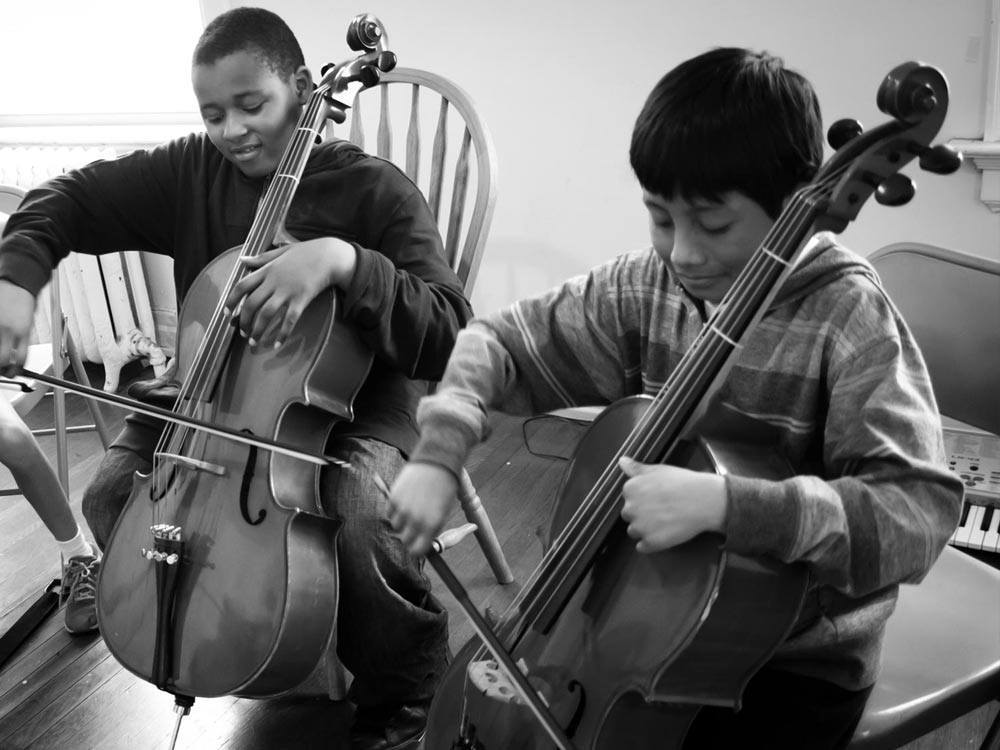
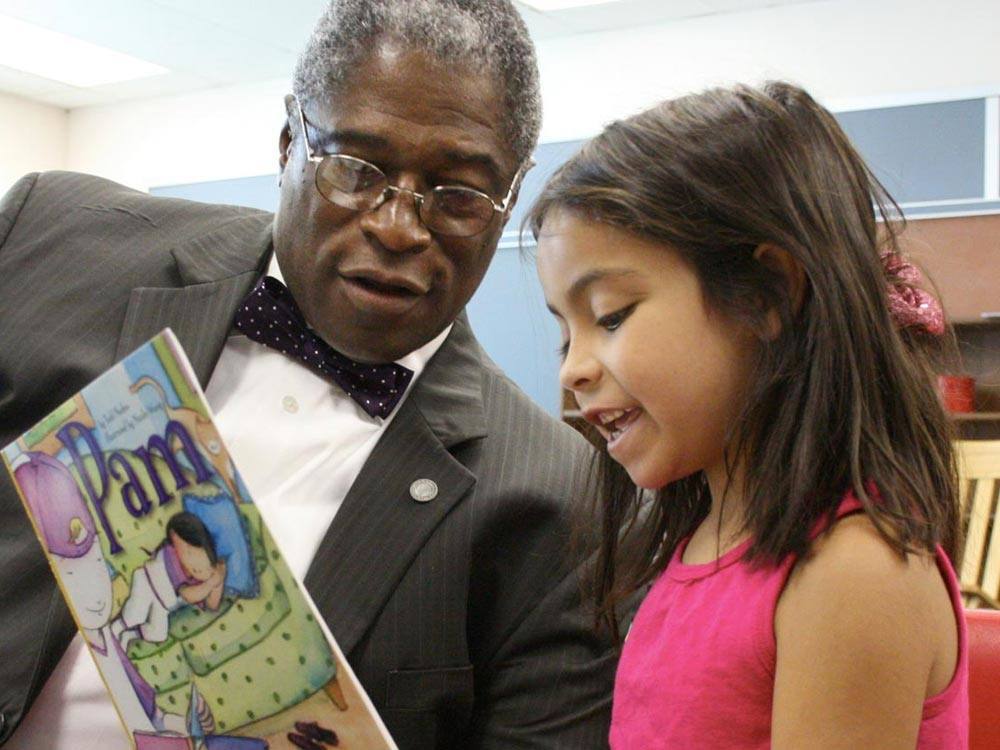
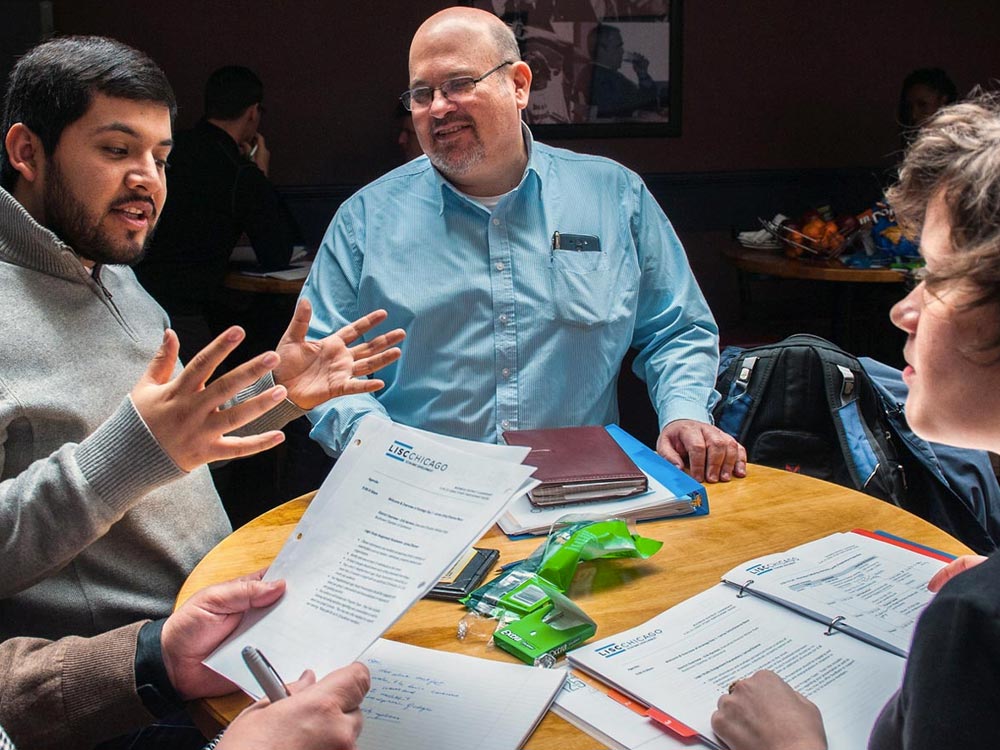
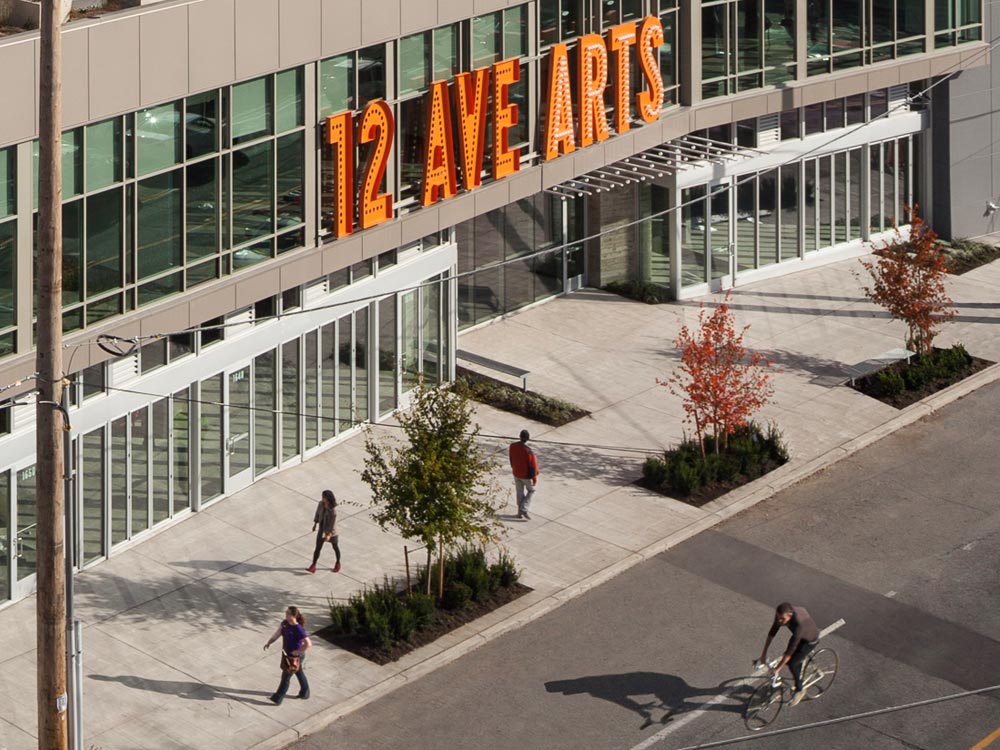
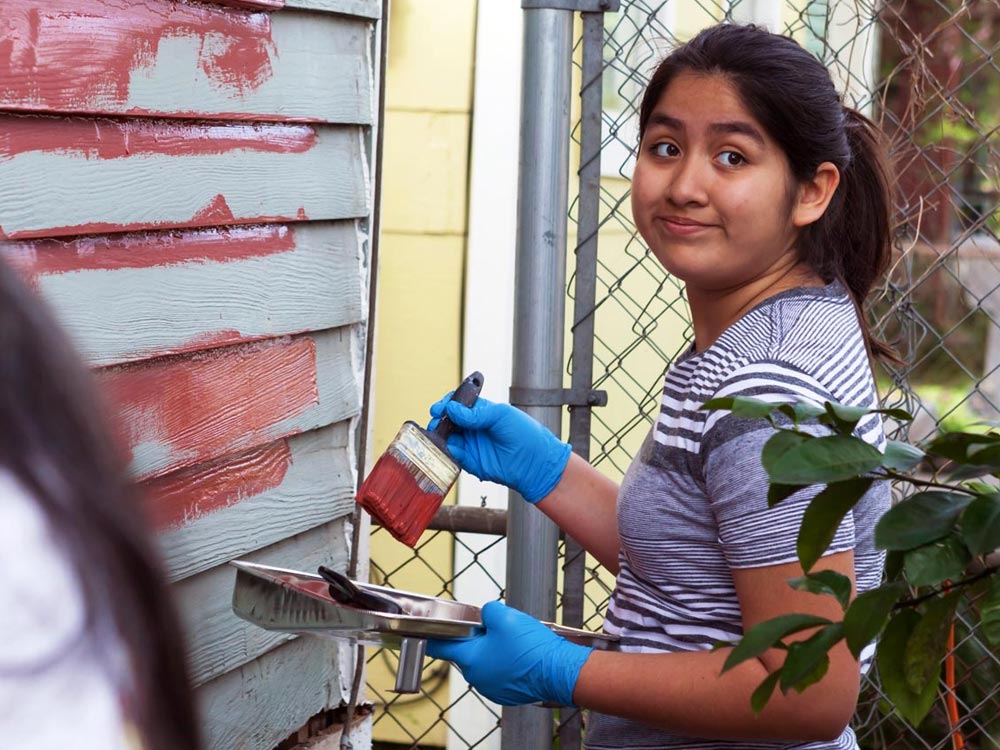
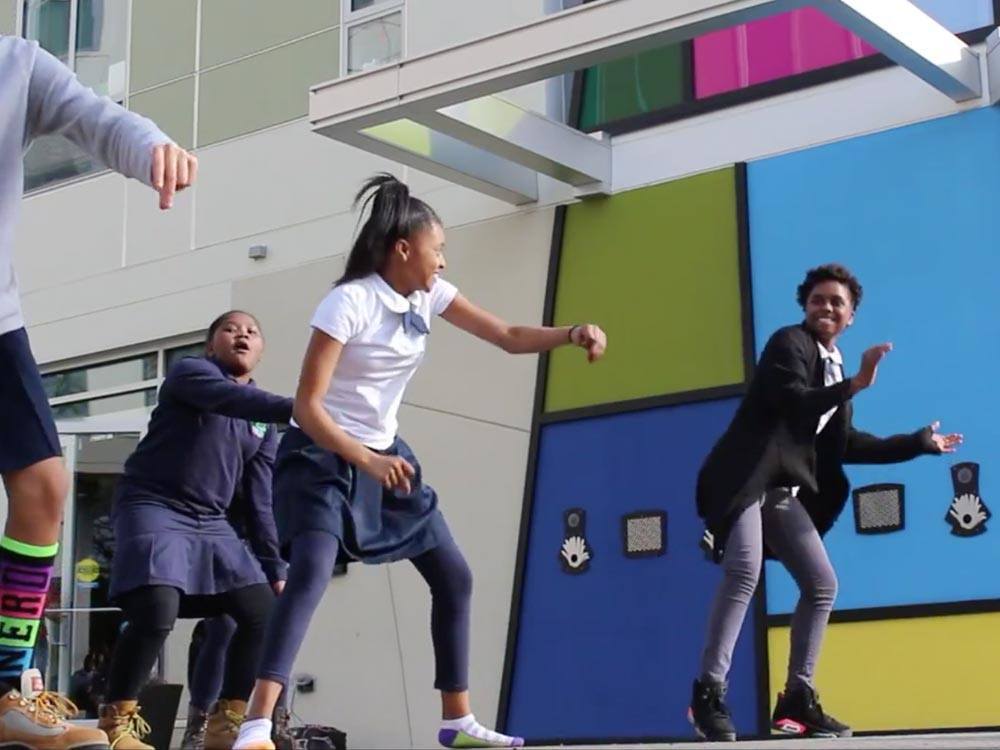
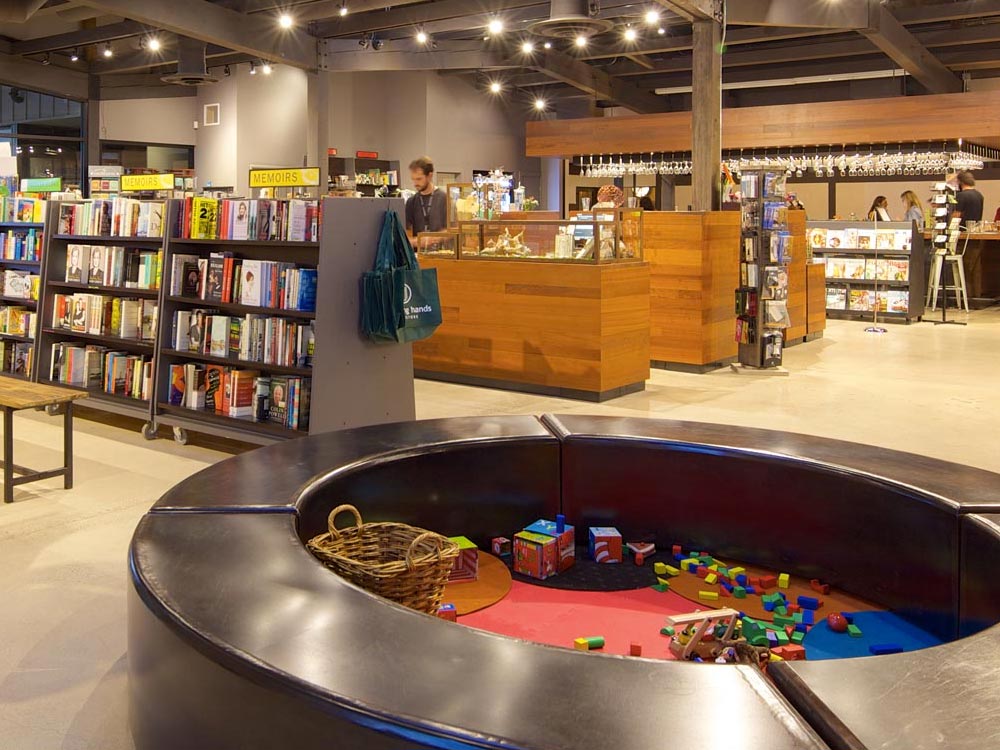

In 30 local offices and through Rural LISC, we make a difference in communities across the nation.








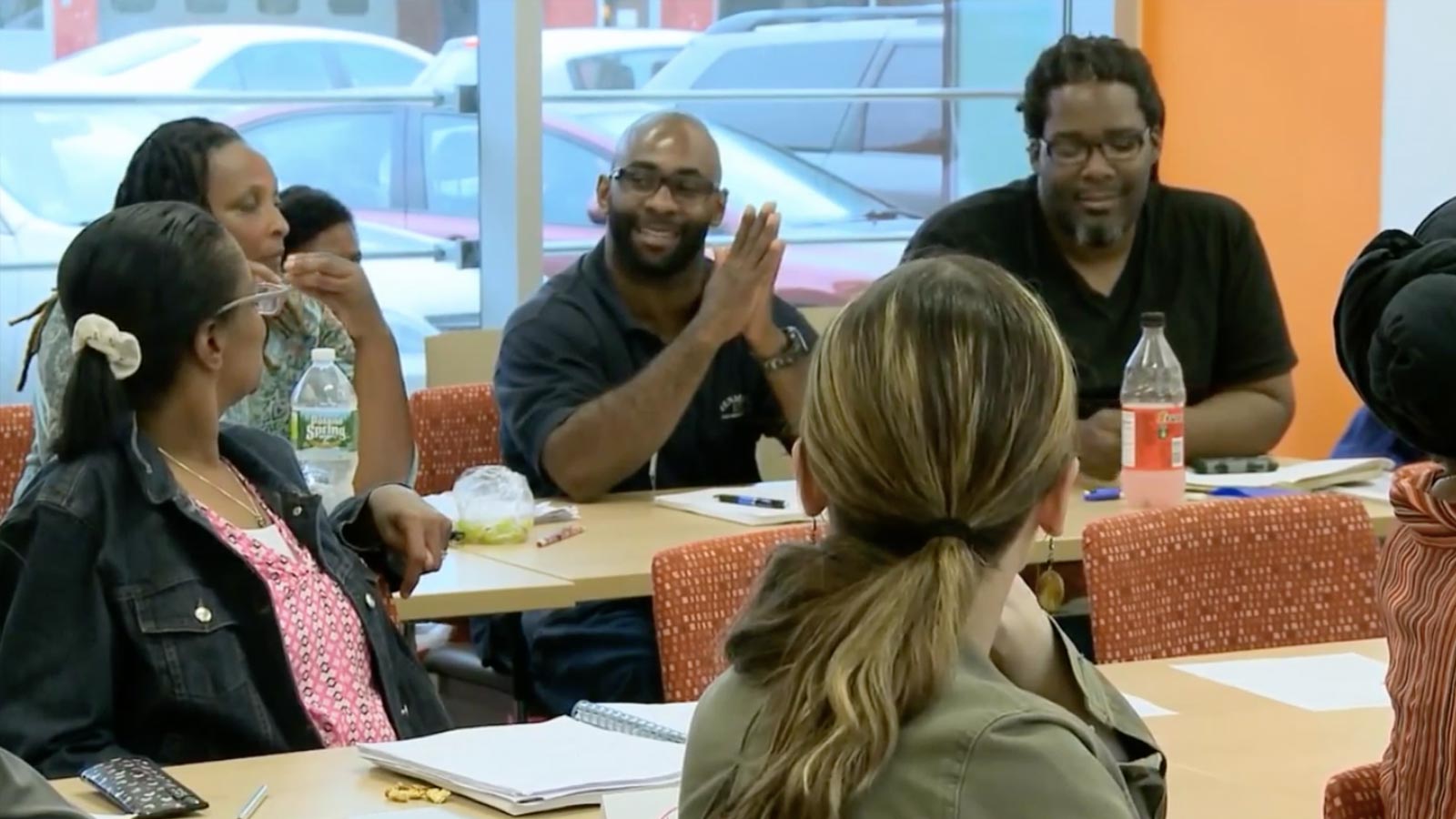
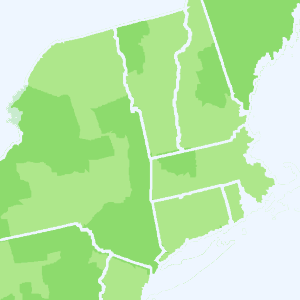
Think of it as Shark Tank with neighborhood renewal in mind. To stimulate economic development as part of its Building Sustainable Communities strategy, Boston LISC launched an entrepreneur training program with a twist: each participant in the new “Resilient Communities, Resilient Families” small business program was tasked with pitching a plan to help revitalize the commercial center of Roxbury, Dorchester or Mattapan. The winner would receive a cash prize and support for making their plan a reality.
The first class of “contestants” embarked on 12 weeks of training in the fall of 2013. Dr. Lesa Dennis-Mahamed, then a staff optometrist at a community health center, won the challenge with her proposal for Gallery EyeCare, an optometry clinic that includes gallery space for local artists.
With the $5,000 prize and a well-honed business plan, Mahamed will open Gallery EyeCare in the historic heart of Boston’s African-American community, Dudley Square in Roxbury, in the very building that symbolizes the district’s rebirth: the former Ferdinand Furniture Building. Now called the Bolling Municipal Building, it has been refurbished as the headquarters for Boston Public Schools and features retail space and a Venture Café to catalyze business innovation in Roxbury.
Last year, 65 entrepreneurial neighborhood change-makers like Mahamed completed LISC’s training program, which runs three courses a year. Together with local partners, LISC has invested some $100,000 in the effort.
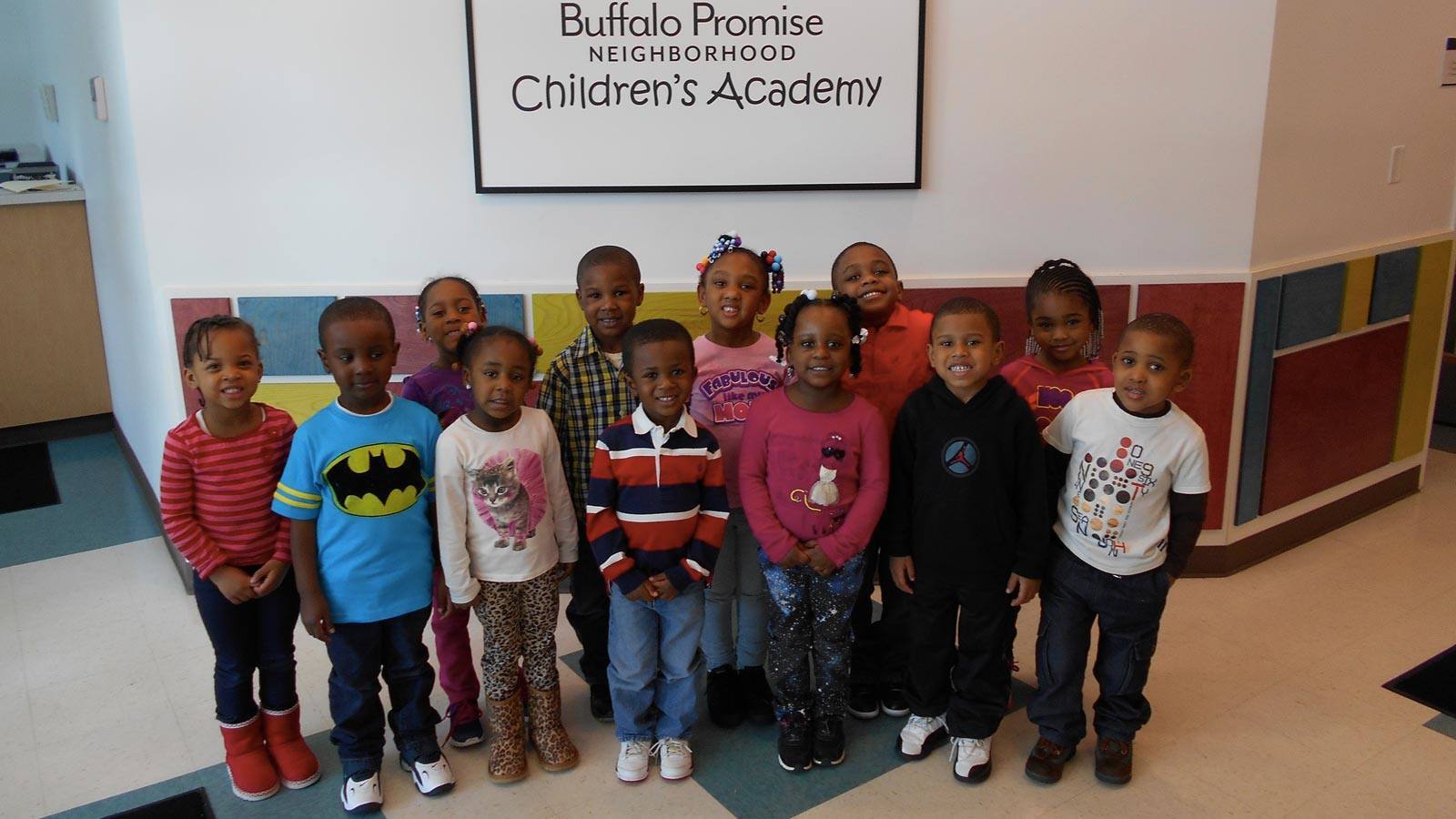
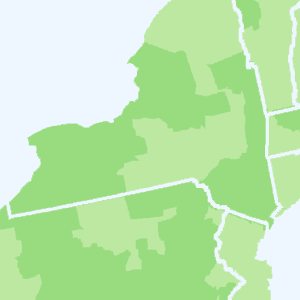
The “promise” behind federal Promise Neighborhoods is to give children access to great schools and strong communities, instilling a love of learning and readying them for success in the classroom and beyond. Buffalo’s Promise Neighborhood (BPN), which encompasses a 97-block area of approximately 12,000 residents, is striving to make good on that commitment by helping families break the grip of poverty and fostering a “college-bound” culture.
The new BPN Children’s Academy is part of that initiative, and operates from the knowledge that education begins at birth. The Academy offers childcare for residents as young as six-weeks-old with the aim of supporting their development in a nurturing, structured environment.
Today, 116 children, newborn to age five, attend the Academy. The 27 teachers and staff members receive ongoing professional development in such areas as literacy instruction and an iPad-based math curriculum. Kids also enjoy outdoor activity on the Academy’s brand new, custom-designed playground.
The parents of Academy kids get programs of their own, through BPN’s Parent Achievement Zone which offers everything from a job counseling and one-on-one financial coaching to a parents-as-teachers curriculum and monthly peer-support events.
Buffalo Promise Neighborhood's vision is that all children and families have access to a continuum of cradle-to-career solutions centered on strong schools which promote academic achievement and healthy development. Buffalo LISC has supported the Buffalo Promise initiative since its inception, providing $1.55 million in funding.
“The BPN Children's Academy is the cornerstone of our efforts to revitalize our community and provide a pipeline of services for families from cradle through college and career,” said Dr. Yvonne Minor-Ragan, president of BPN. “With LISC’s help, in our two years in existence we've made great strides toward preparing children for kindergarten and creating a strong community of parents working to improve their family's lives.”
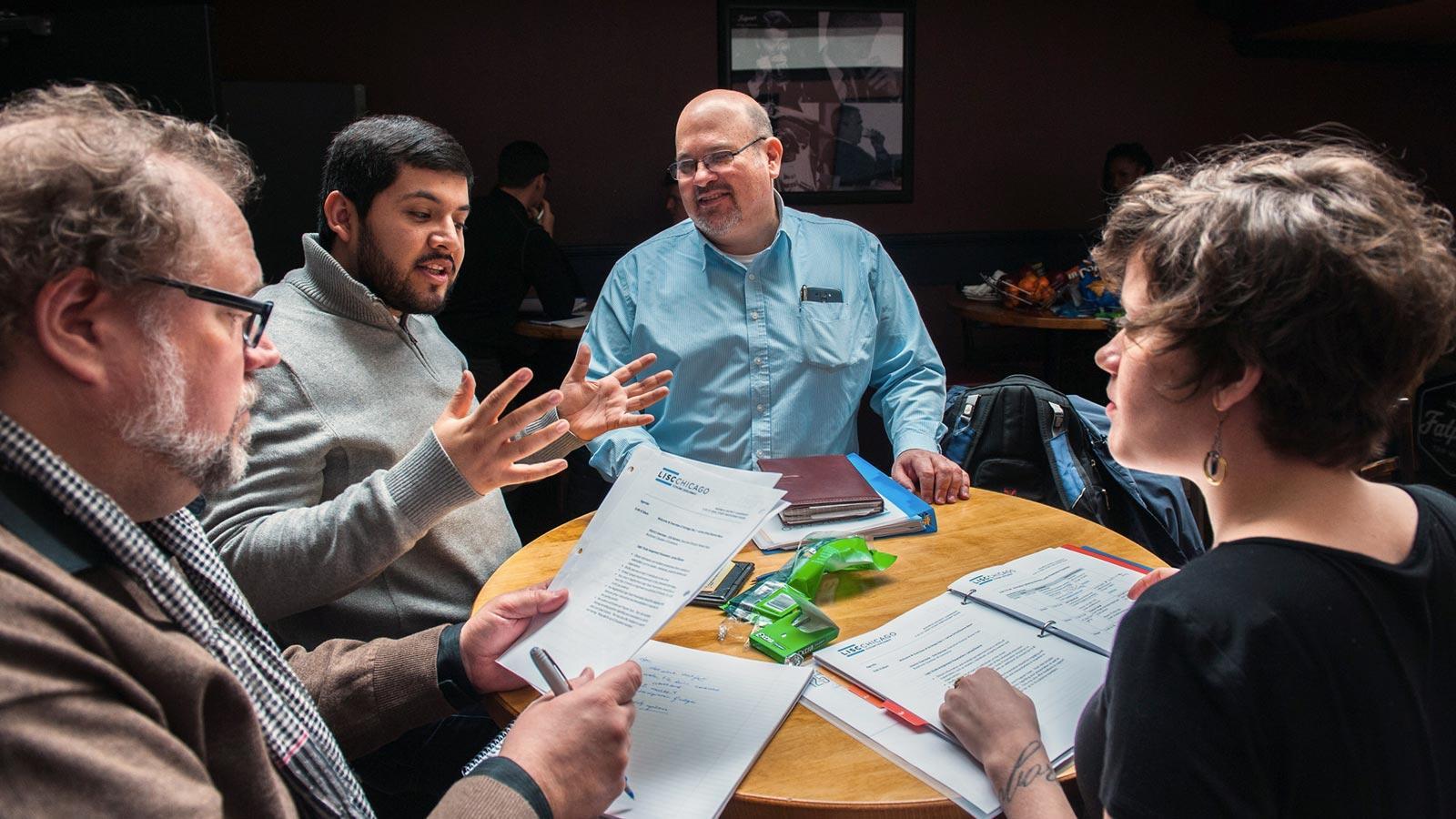

When community developers set out to help business grow in a disinvested place, they need good connections and plenty of know-how to make it happen.
To that end, LISC Chicago launched the Business District Leadership (BDL) program in 2014, a six-month course for community business developers to hone skills and develop the professional networks they need to create vibrant local retail districts.
BDL’s first 20 participants—leaders from nonprofit commercial revitalization groups around the city—have immersed themselves in retreats and strategy sessions where they learn about the resources critical for supporting active corridors. They trade expertise and ideas, visit successful business districts and interview community members about what makes a corridor work.
Next, they apply what they’ve absorbed from group discussions and their research to ambitious test projects in their own neighborhoods. These initiatives range from re-purposing the site of a former Near North Side steel plant to creating a pop-up retail plan in Bronzeville to the development of a commercial kitchen in Englewood.
With the first class of BDL graduates on the job, expect to see plenty of new business life percolating in Chicago communities. The $250,000 invested to kick-start the program will translate into dozens of enterprises that fire up local economies.
“LISC has consistently led efforts to strengthen and support commercial corridors as a critical component of neighborhood improvement,” said Dionne Baux, the LISC Chicago senior program officer in charge of BDL. “This program is another way to help these neighborhood assets thrive.”
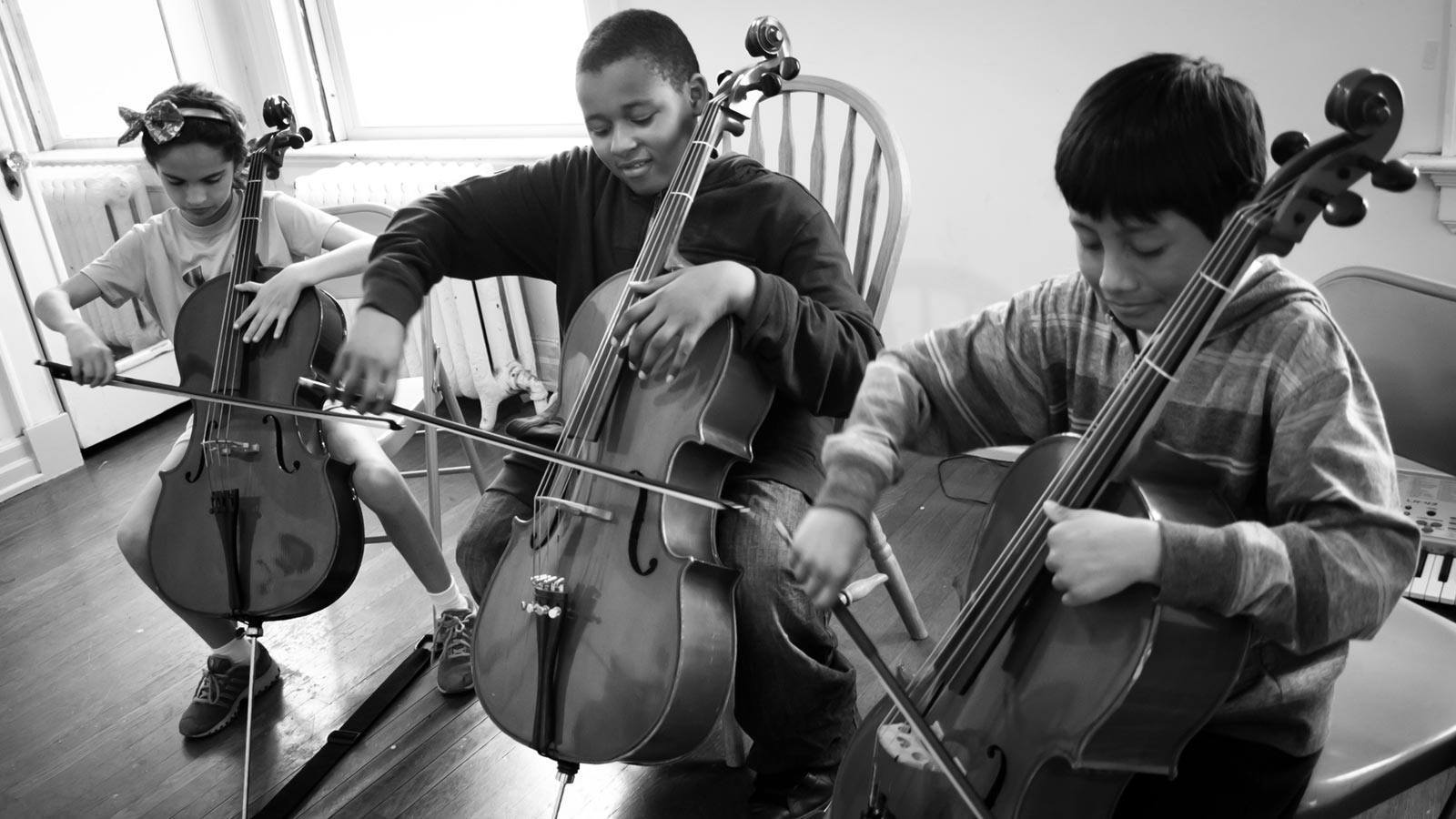

They say music is a universal language; the benefits of learning to play music are universal, too. Children who study an instrument develop self-discipline and strong reasoning and communication skills, and they tend to excel academically. In the Price Hill neighborhood of Cincinnati, a free youth orchestra program called Music for Youth Cincinnati (MYCincinnati) is training kids in classical music—and helping instill self-confidence, focus and good work habits in the bargain.
Every day after school, 80 children, representing all the diversity of Price Hill, gather to study musical instruments and play in an orchestra for two hours at a stretch. The program follows the model of El Sistema—the “system”—an orchestra-based music education program developed in Venezuela, now internationally renowned for transforming the lives of tens of thousands of children. “It’s free and located in an area that may have access barriers to studying classical music,” says Laura Jekel, founder and director of MyCincinnati, and a classically trained cellist.
The beauty of an orchestra program is that “it creates a different kind of musician, one who is not focussed just on themselves but on the group,” says Jekel. “Although all ages are playing together, all at different levels, the levels are still all progressing and the group sound gives the kids confidence.”
LISC has provided Price Hill Will, MYCincinnati’s parent organization, with more than $500,000 in grants to support its use of visual arts, music and culture to enhance community development work. The funding is part of our comprehensive approach to revitalizing this historic but long underserved neighborhood. A LISC grant, in fact, paid for the instruments the kids rehearse on every day. Now that’s music to our ears.
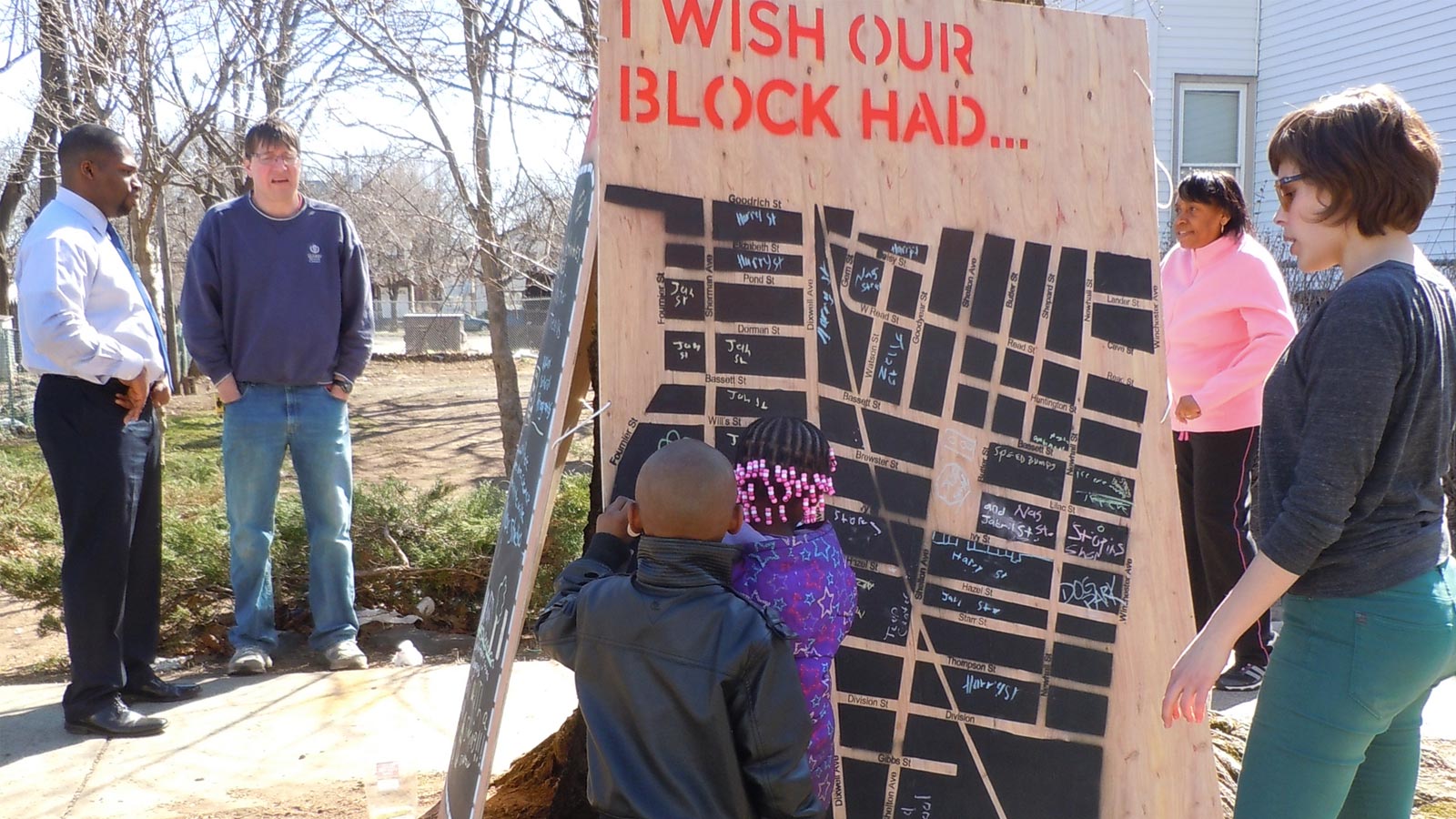

Sometimes, the sum of changes in a neighborhood is far greater than the parts. Such is the case with the Newhallville section of New Haven, Conn., where residents have struggled for decades with high rates of poverty, blight and increasing crime. With support from LISC and training in Crime Prevention through Environmental Design, known as “CPTED,” community leaders, together with the nonprofit Neighborhood Housing Services of New Haven and the New Haven Police Department, employed a set of strategies that have reduced violent crime by 25 percent and spurred homeownership at the same time.
Following LISC’s CPTED training, the neighborhood’s safety committee identified areas with poor lighting and escape routes for criminals, and figured out ways to remove physical elements that were conducive to illegal activities.
Residents and the city worked together to repair sidewalks, trim vegetation and install or replace 1,000 streetlights. LISC provided a matching grant for lighting improvements as well as funding to support community engagement staff. Locals refurbished community gardens and even launched a walking club that encouraged exercise and put more “eyes on the street.”
Neighborhood Housing Services saw real estate development as another tool to undermine crime in Newhallville. It partnered with Yale University’s School of Architecture, holding a competition for students to design affordable homes that met challenging zoning and space requirements. The winning prototype was built last year and now stands as a beacon of progress in a once forbidding location.
Last year, Newhallville won a MetLife Community-Police Partnership Award for its progress. And, the work continues. Residents host block parties and clean-ups. A vacant lot is transformed into a weekly farmers’ market, and neighborhood youth now have access to programming from a host of nonprofit agencies. With support from LISC, the community and its partners are reshaping what was once New Haven’s most notoriously dangerous neighborhood.
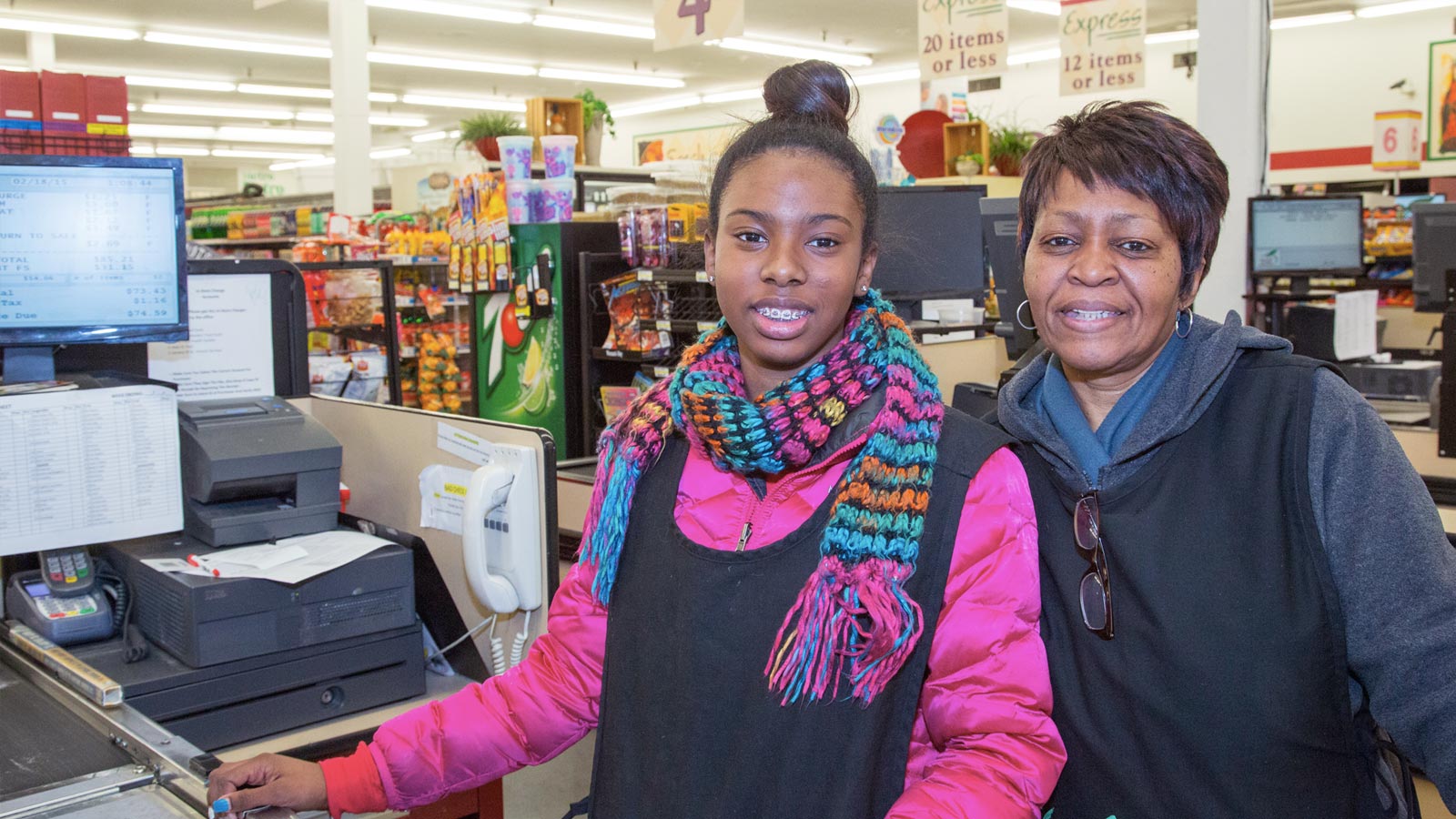

In many parts of Detroit, the only place to buy food is at a gas station or from a party supply store. To find a good selection of fresh groceries, residents are often forced to venture out of their neighborhoods—and even beyond city limits.
When LISC Detroit identified Grandmont Rosedale as one of its Building Sustainable Communities neighborhoods, there was just one grocery store in the area. But it was on the verge of closing, leaving residents with no local place to shop for fresh food.
As part of its approach to helping revitalize the neighborhood, LISC extended a $1.3 million loan to new owners who are now upgrading the renamed Royal Foods Fresh Market. Royal Foods will stock high-quality merchandise, including a selection of organic food, fresh produce and deli items that residents have requested. The market is also installing new air conditioning and energy-efficient equipment to improve the shopping experience for more than 17,300 potential patrons.
“A well-stocked grocery store can anchor a community, and for us that anchor is Royal Foods,” said Kathy Garrett, a Grandmont Rosedale resident. “It helps keep the community stable by providing a strong commercial presence.” And a grocery store, she added, can also serve as a meeting place.
Royal Foods Fresh Market is one of only six full-line grocers in Detroit’s First District, which means it serves many people who live outside of Grandmont Rosedale. The market employs 35 neighborhood residents and is part of a resurgence of activity along the Grand River commercial corridor. With a new coffee shop, a co-working space, a beauty salon and some promising pop-up stores among its neighbors, Royal Foods is making its mark as part of a healthy, rebounding community.
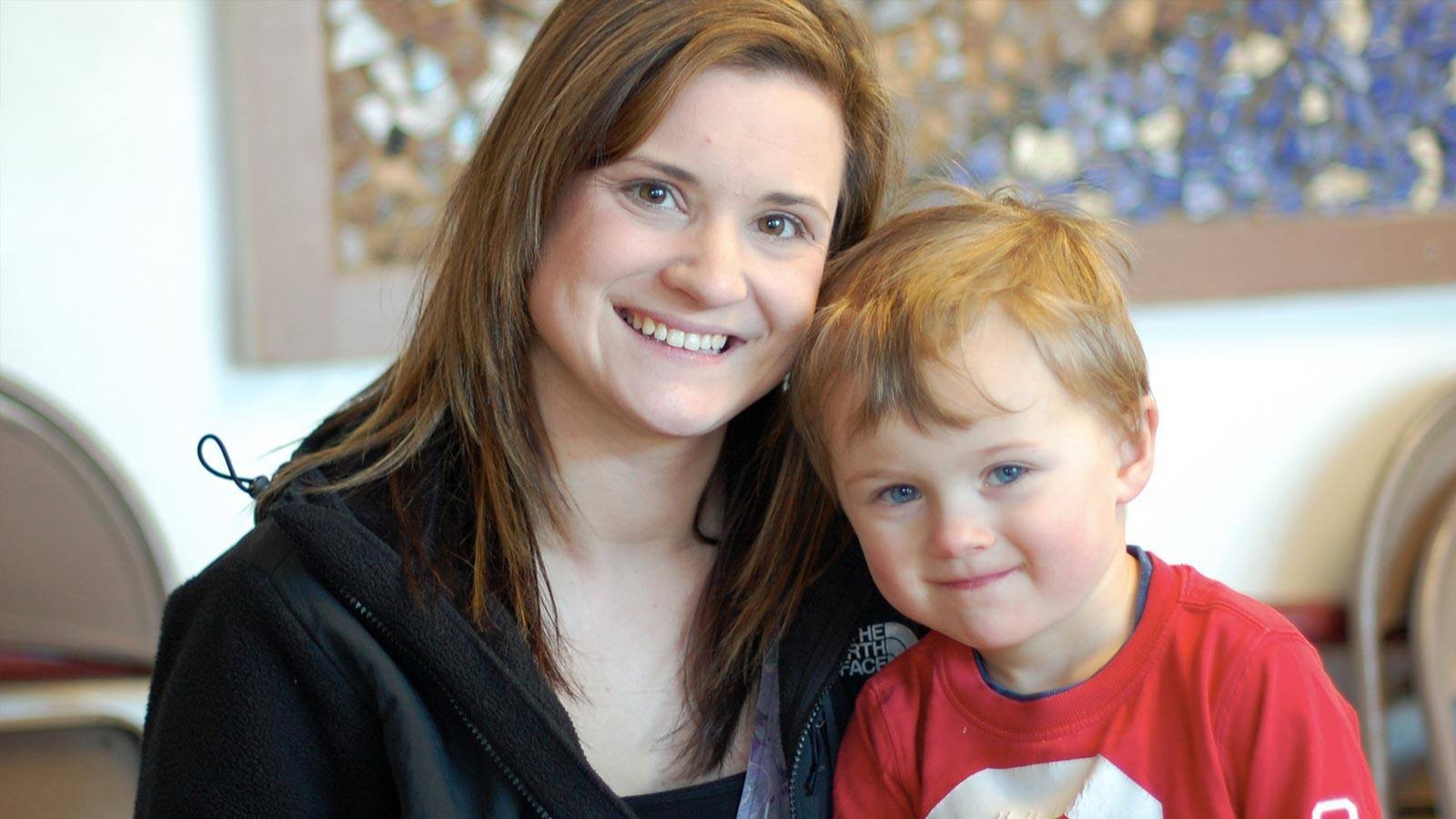

When Kelsey Mack was 17, she became pregnant and dropped out of high school. Without a support network, the single mother struggled to provide stability for herself and her newborn son but could not make ends meet on minimum wage. Frustrated, she turned to alcohol to cope, and life spiraled downward. In spite of it all, Mack knew she was capable of much more: in 2013 she got sober, obtained her GED and began looking for ways to get a solid financial foothold.
That’s when Mack turned to Community Action Duluth and its Financial Opportunity Center (FOC), a resource that has received more than $980,000 through Duluth LISC since its inception in 2011. The FOC provides clients like Mack with customized employment and career counseling, financial coaching and public benefits screening. It serves more than 400 families each year with a bundled services approach that helps get people on the path to success.
With guidance from her FOC coach, Mack’s effort and determination are paying off. Today, she is debt free and on the dean’s list at college. She has graduated from Community Action Duluth’s financial literacy and healthy parenting classes and earns $3 more per hour than when she first arrived.
“To my family, education means a solid foundation to grow,” says Mack. “Not knowing where to go or who to be in life is a scary feeling; I know because that’s where I had been for so long. Now, I know I can accomplish anything or become anyone I ever hoped to be.”
Since connecting with Community Action Duluth, Kelsey has taken custody of her teenaged brother and now volunteers with the nonprofit’s GED program. She’s offering others the same kind of helping hand that she received, not so long ago.
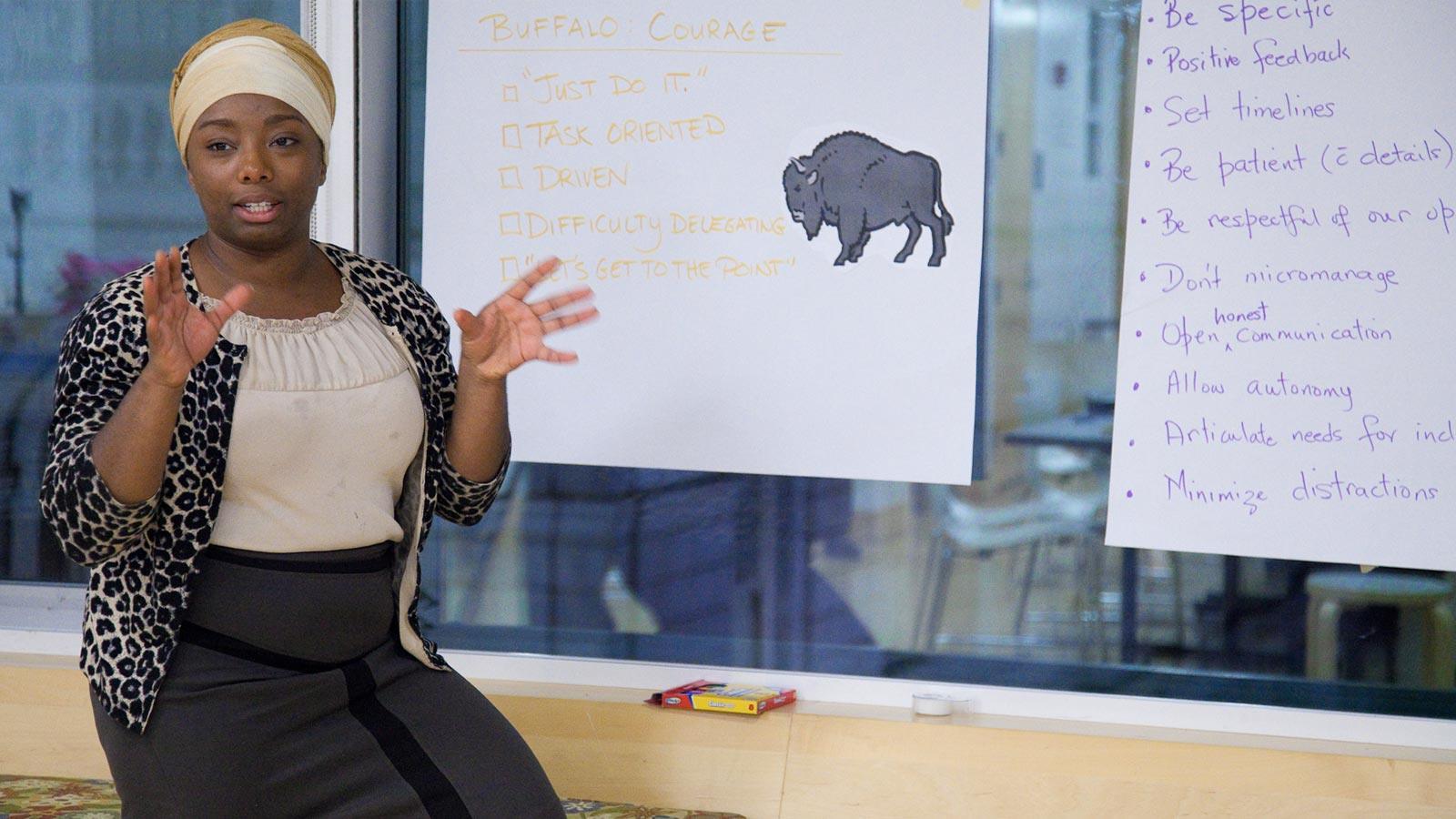

For two decades, the Mutual Housing Association of Greater Hartford (MHAGH), a developer of affordable homes in the city, has involved residents in the governance and nuts-and-bolts management of its buildings. But a few years ago, the nonprofit realized that residents needed strong leadership skills if they were to be equal partners in building strong communities.
With that goal in mind, MHAGH created a new program, the 12-week Mutual Housing Leadership Academy (MHLA), to train residents to govern within their communities. Participants learn about team building, project planning, public speaking and recruiting. Then, they apply their new skills to projects that address community needs.
Upon graduation, participants leave with a set of real plans under their belts and are eligible to apply for grants from MHAGH to seed new projects. Several have returned to college with scholarships they earned through the program.
“[The Leadership Academy] gave me the confidence that I could make a difference and that it didn’t have to be on a big scale,” said Warren Hardy, a community leader. “There were small things I could do to make improvements.”
Originally designed exclusively for Mutual Housing residents, the Leadership Academy is now open to emerging leaders from elsewhere in the Hartford area and has a substantial waiting list. More than 100 graduates from diverse backgrounds have completed the program and have gone on to launch projects ranging from health and cultural diversity initiatives to hunger and homelessness awareness events in their own communities.
LISC has provided the Mutual Housing Association of Greater Hartford with more than $800,000 over the past three years, helping grow the organization so that it can serve more neighborhoods and residents in Hartford and beyond.
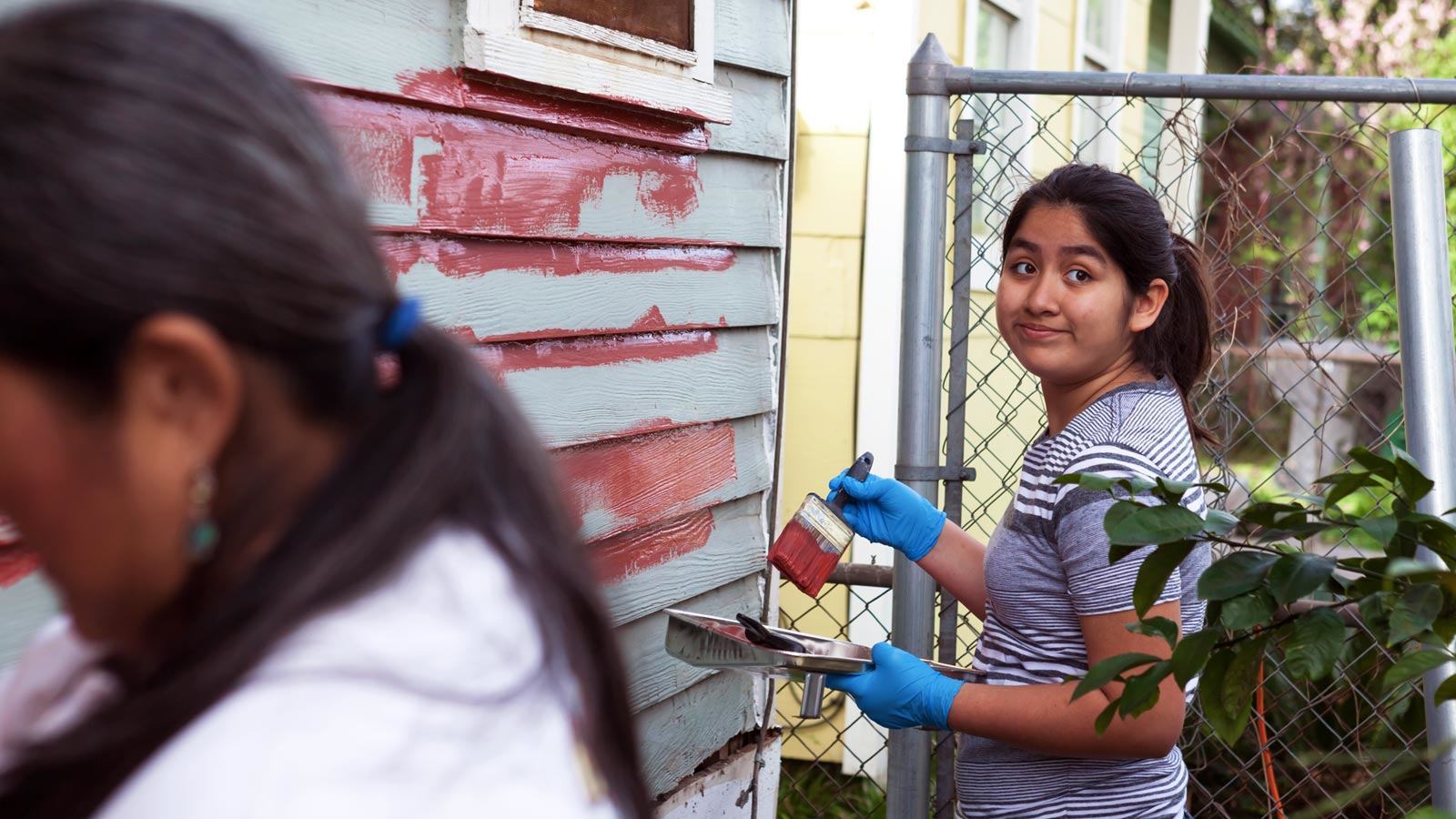

There’s no place like home, even when home is in need of repair. That’s certainly the case for many seniors and veterans in the Near Northside neighborhood of Houston, who often don’t have the resources or physical capacity to maintain their houses but want to stay in them.
LISC Houston knows that deferred maintenance can compromise a resident’s safety and thus her ability to stay in her home. And homes in need of repair can also diminish a neighborhood’s environment, a big concern in Near Northside.
To tackle this problem, LISC helped local partner agency Avenue CDC team up with a home-repair nonprofit called Rebuilding Together—Houston. Rebuilding Together repairs houses, free of charge, for elderly, low-income people, on a case-by-case basis. Joining forces with Avenue CDC, they selected a cluster of 10 homes in Near Northside belonging to seniors and veterans. Then, they recruited 10 organizations, ranging from real estate brokerages to multinational corporations to churches, to assemble volunteers and repair one home each.
And repair they did—painting, caulking and hauling garbage away from illegal dump sites along the neighborhood’s streets. That first effort had such a noticeable impact that LISC’s Great Opportunities Neighborhoods team and Rebuilding Together decided to make it an annual event.
House by house, block by block, local partners are boosting quality of life not just for individual homeowners, but for an entire community.
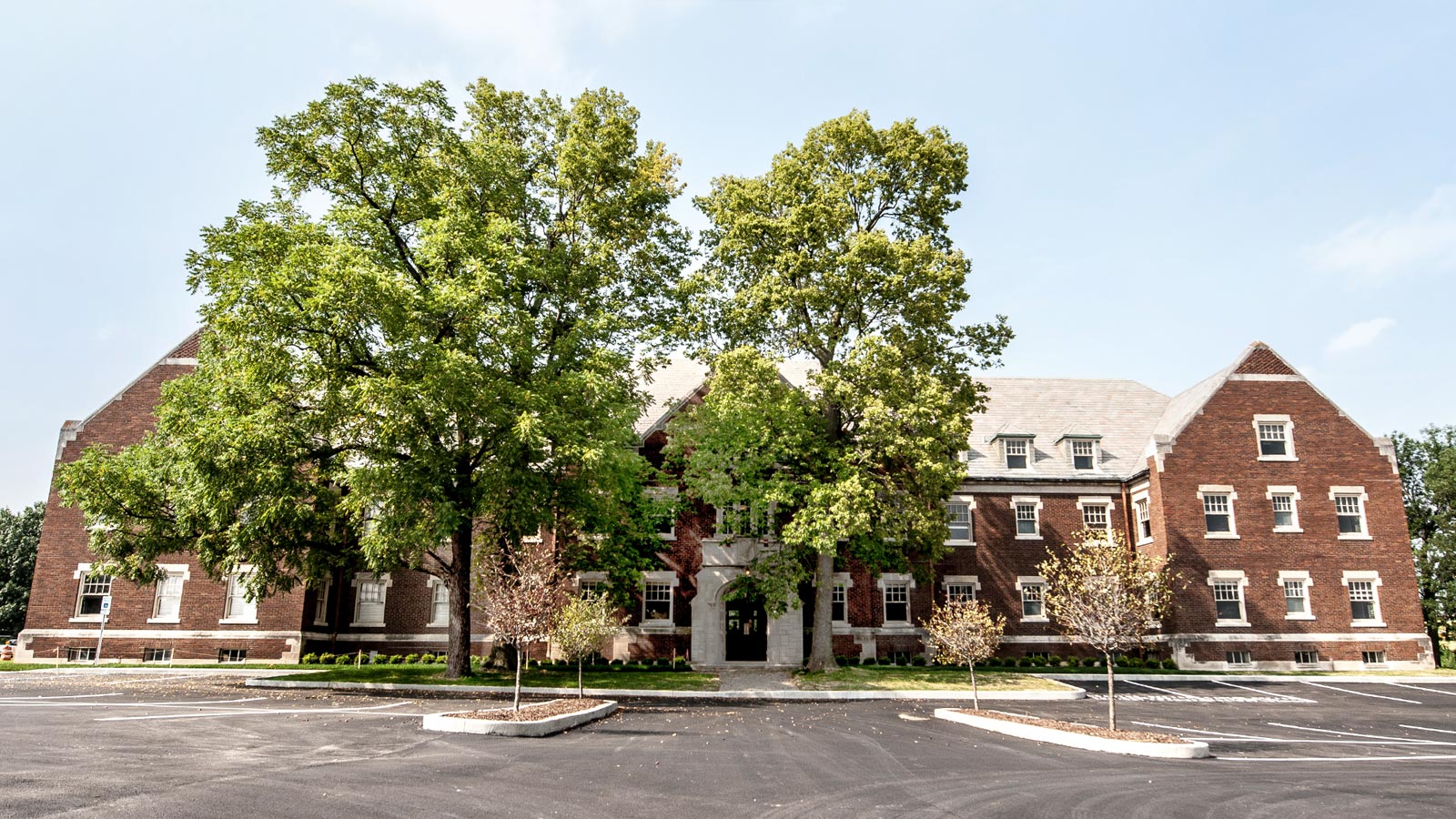

In 1827, when the builders of the Central State Hospital were erecting the stately brick institution in what is now known as the Near West section of Indianapolis, it’s doubtful they had plans for a yoga room, indoor bike parking or electric car plug-ins.
But that’s what the building, recently converted to affordable housing for students at Indiana University-Purdue University Indianapolis (IUPUI), now features. LISC Indianapolis, the city of Indianapolis and Reverie Estates developers have joined forces in a project encompassing more than nine acres at the heart of the former Central State Hospital complex, which once housed 3,000 patients. Funding cuts forced the hospital to close in 1994, and the site has been vacant and deteriorating ever since.
The building’s new life as a dorm with 138 beds, study libraries and a theater links the Near West community with IUPUI, an anchor institution in the area. It’s part of a $50 million development in the neighborhood that includes a charter school, a 144-unit apartment complex, senior housing, an urban farm supported by LISC and a sports field made possible with a $200,000 grant through LISC’s partnership with the NFL.
Central State Mansion was completed with a $3 million loan from LISC Indianapolis, the project’s principle financier. It’s the largest loan LISC Indianapolis has made in a decade and a perfect example of how we are helping turn a vision for the once-neglected neighborhood into reality.
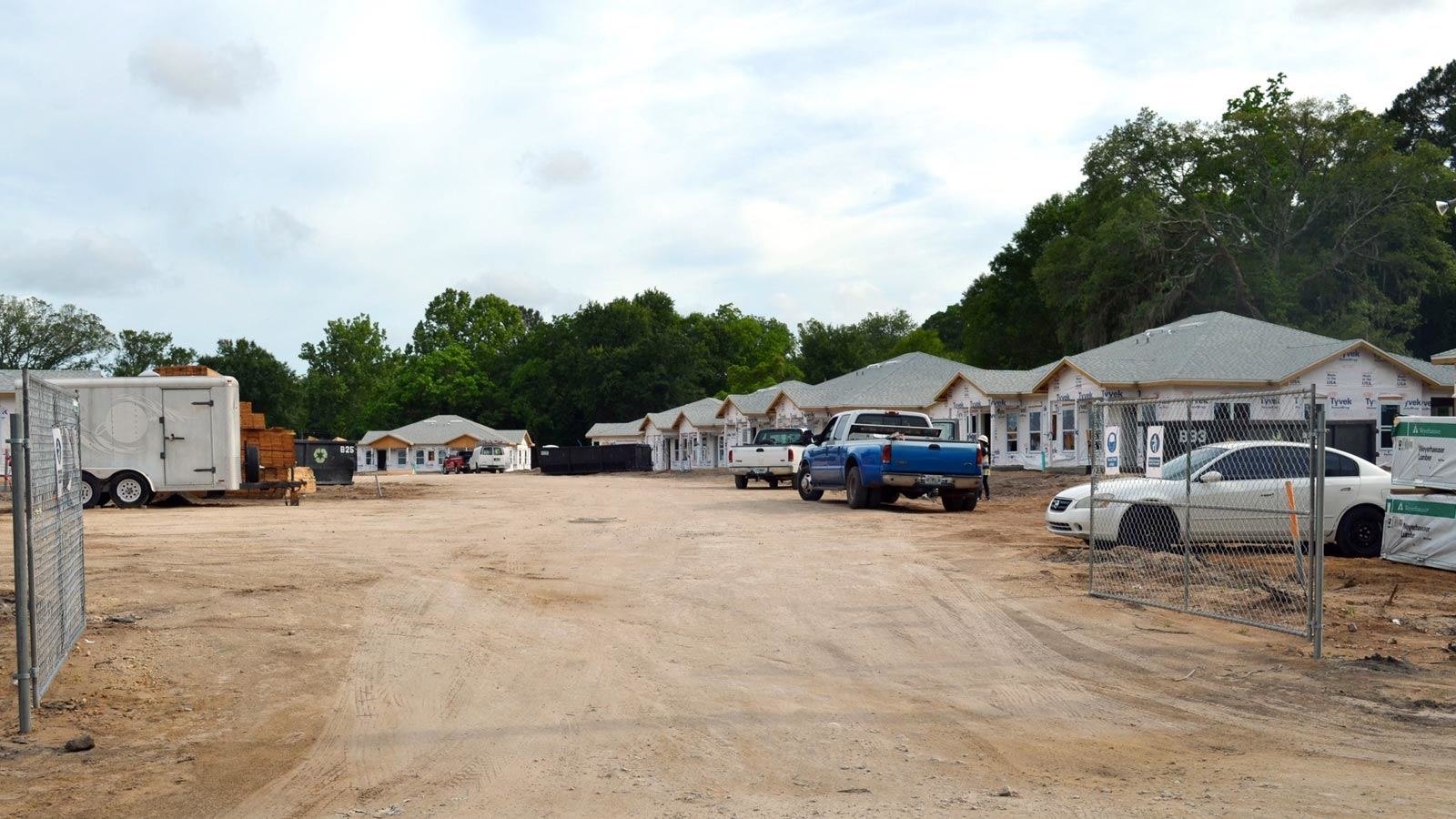
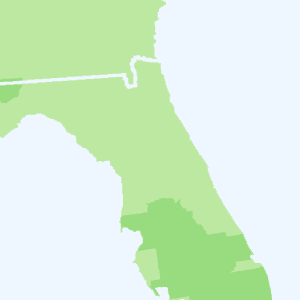
LISC knows well that organizations in the business of helping people in need can sometimes use a hand themselves. Such was the case with Ability Housing, a Jacksonville nonprofit and LISC partner that develops and manages safe, affordable housing for homeless families and people with disabilities.
In 2014, Ability Housing realized its staff needed to grow in order for the organization to be an effective advocate in the fight against homelessness. So, LISC provided a $40,000 grant to help Ability find and hire a director of property development, whose main job is strategic planning for future housing sites and activities.
With the new staffer, Ability has been able to leverage its impact exponentially. Last year, the housing developer won a $5.9 million state grant to build the Village on Wiley, a 43-unit permanent supportive housing community. Construction began in December, and the first residents are slated to move in this year.
The families and individuals who will make their homes there have been homeless or have lived in unstable housing, and many had to make use of crisis services of various kinds. Village on Wiley promises to be the helping hand they need.
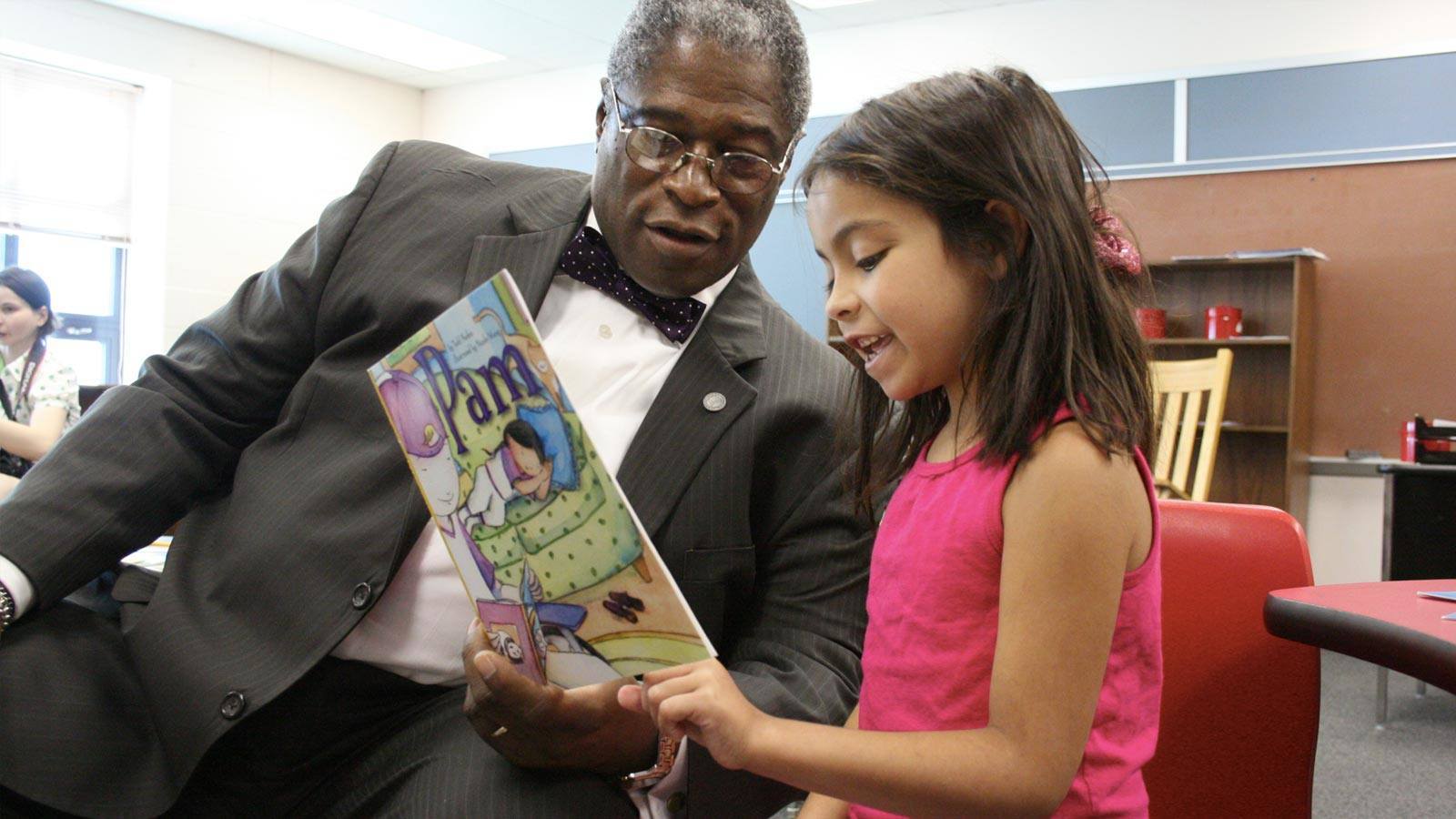

“Learning to read better has been my favorite part of the summer,” says Cherish Redmond, a Kansas City second-grader. “It makes me feel like a smarter, older kid.” Cherish is one of 2,600 children served by the Upper Room Summer Academy Camp, a free program that provides Kansas City, Mo., youth a safe place to learn and play. During the yearly, eight-week session, the average student gains a full academic year in reading-level achievement, and participating students devoured an impressive 212,063 books during the summer of 2014.
Children like Cherish have had this opportunity thanks, in part, to LISC. We provide bridge loans during the summer, covering the program’s expenses until the Upper Room is reimbursed by the state Department of Education each fall. Over the past seven years, LISC has invested more than $19 million in the Upper Room Summer Academy Camp, serving thousands of low-income children.
The intensive program, geared to students entering first through eighth grade, targets kids’ reading skills through one-on-one work with certified teachers, youth counselors and volunteer tutors. Participants also receive a healthy lunch and take part in activities that include private music and dance lessons and field trips to local cultural institutions like the Nelson Atkins Museum of Art.
“If not for LISC, we could not run the summer program year after year,” says Jerry McEvoy, executive director of the Upper Room. “In one of the toughest economic climates, we have not only maintained the program, we have actually expanded it.”
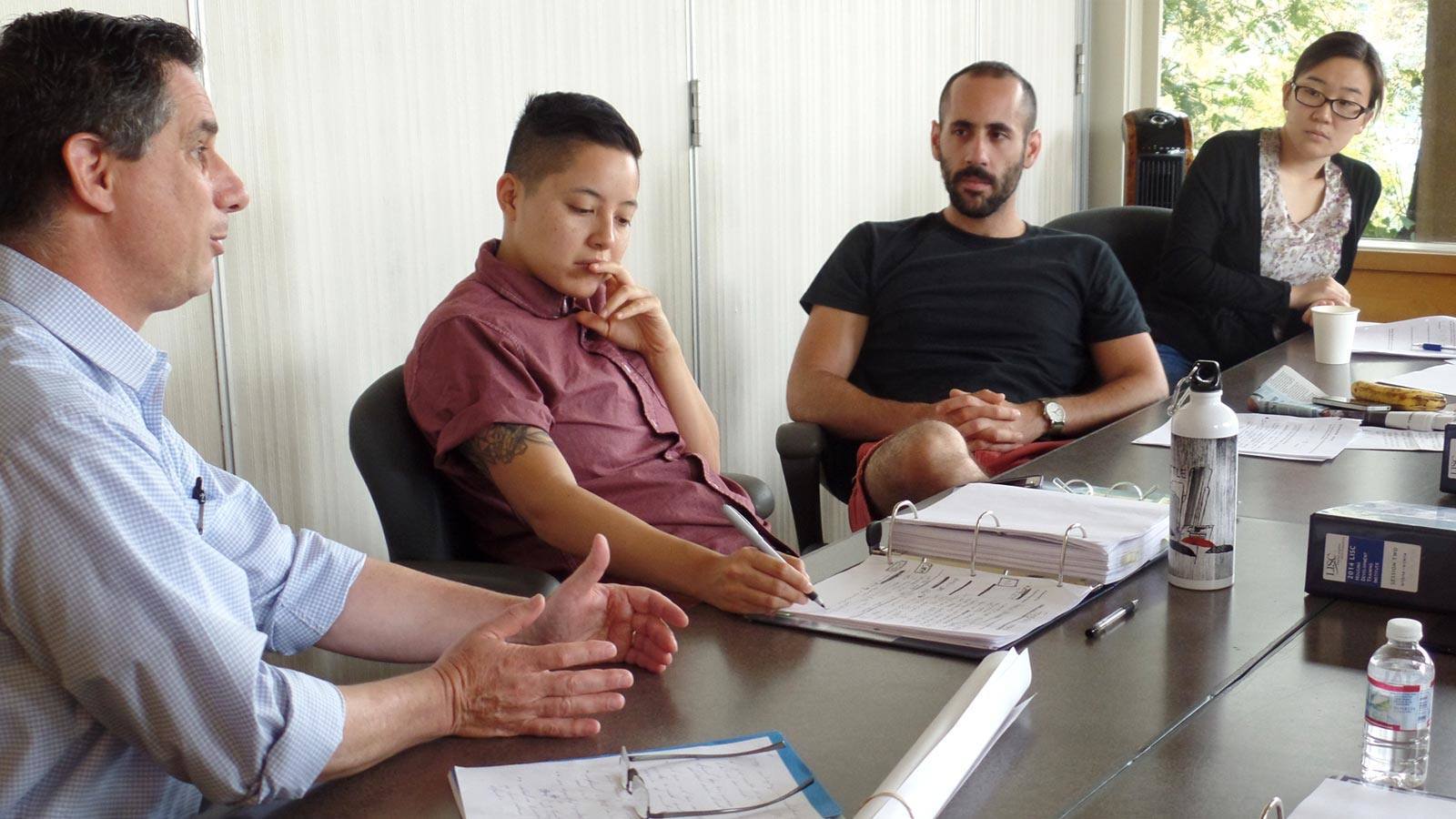

In the world of community development, we constantly seek out ways to work around the problems of rising real estate costs and the scarcity of affordable housing. LISC Los Angeles has hit on a key—and often overlooked—strategy: training affordable housing developers to work as intelligently and effectively as possible.
Together with our San Diego and Bay Area offices, LISC LA has inaugurated the Housing Development Training Institute (HDTI), an intensive, two-week program that teaches project managers about the critical stages and financing issues of affordable housing development.
In 2014, 14 project managers from Los Angeles-area developers, representing more than 1,600 units of affordable housing, took part in workshops and activities to hone their knowledge of market analysis, site identification, design and construction management and financing, among other subjects. They also practiced how best to negotiate deals with lenders and investors.
The program culminated with an event where participants could network and share best practices with their peers from San Diego and the Bay Area.
“HDTI has been the most beneficial and relevant training that I have participated in,” said Cecelia Ngo, a project manager with the Coalition for Responsible Community Development, who took part in the first session of the program. “The training really provided me with the framework of the development process.”
Graduates of the 2014 HDTI training are expected to apply their new skills to help build or renovate more than 4,200 affordable homes in California.
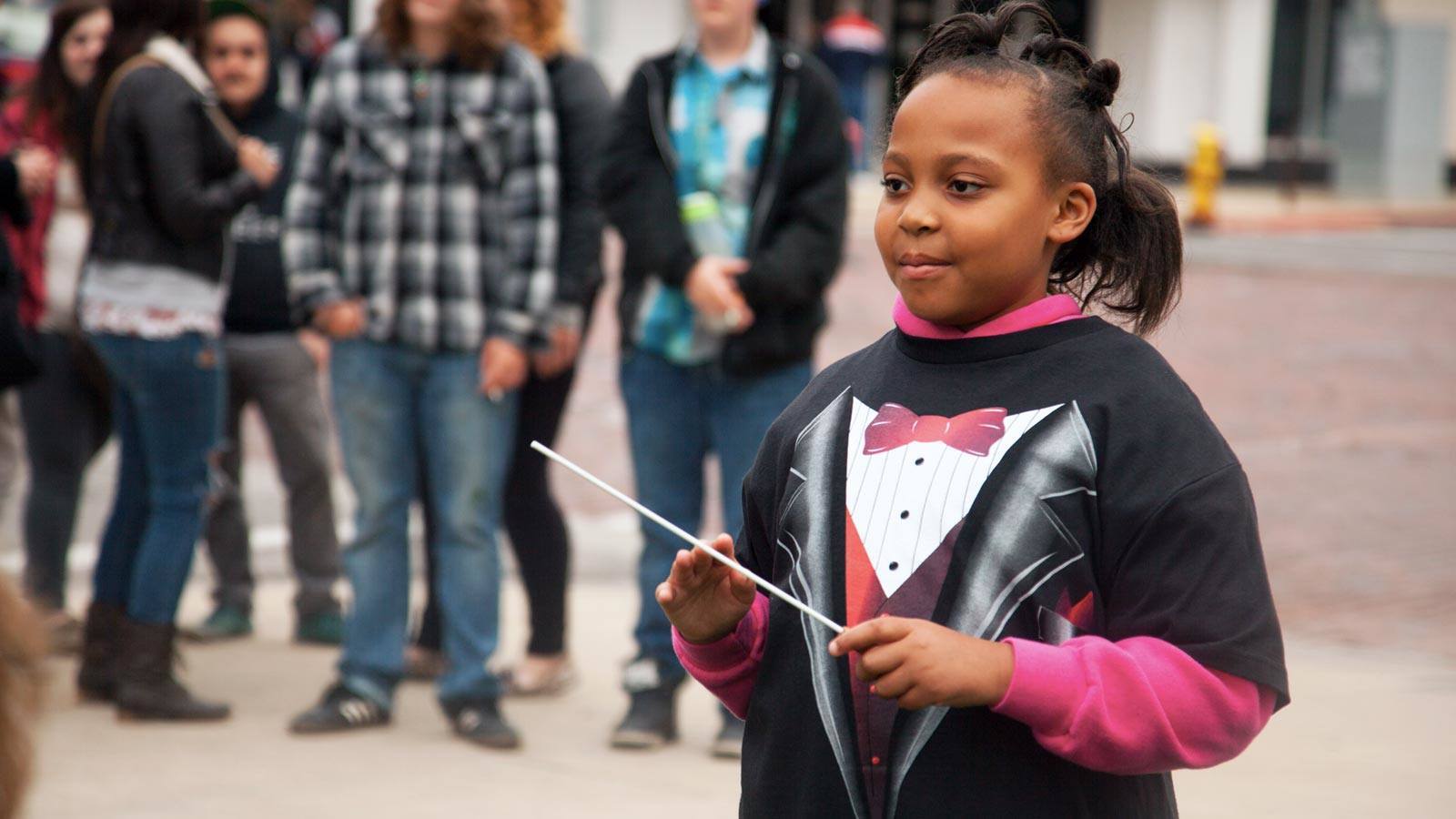

People living in underserved communities face many kinds of scarcity—including a scarcity of ways to experience arts and culture. To help remedy that deficit in Flint, Mich., LISC partner Communities First, Inc. (CFI) created a program called Culture Shock that brings visual art, music, food and sporting events to enrich the cultural landscape in low- to moderate-income neighborhoods.
Culture Shock activities are free and open to all, and in 2014, 2000 people took part in an extraordinary range of offerings: members of the Flint Symphony performed a classical music concert at the downtown bus terminal; the Flint Institute of the Arts offered family tours, residents watched films under the stars in the park behind City Hall and sampled international cuisine at a food fair dubbed “Taste of Culture.”
Alongside affordable housing and economic development, Culture Shock is part of CFI’s strategy to promote equity and quality of life in Flint. LISC has provided more than $300,000 in operational and project funding to CFI, and provides a part-time AmeriCorps member who works as a volunteer coordinator.
The organizers of Culture Shock hope the program will integrate cultural activities into the neighborhood lives of people who “have been historically disconnected from the arts,” said Glenn Wilson, CEO of Communities First, Inc. By changing their relationship to the arts, people “expand their horizons, broaden their tastes and deepen their understanding of the world around them.”
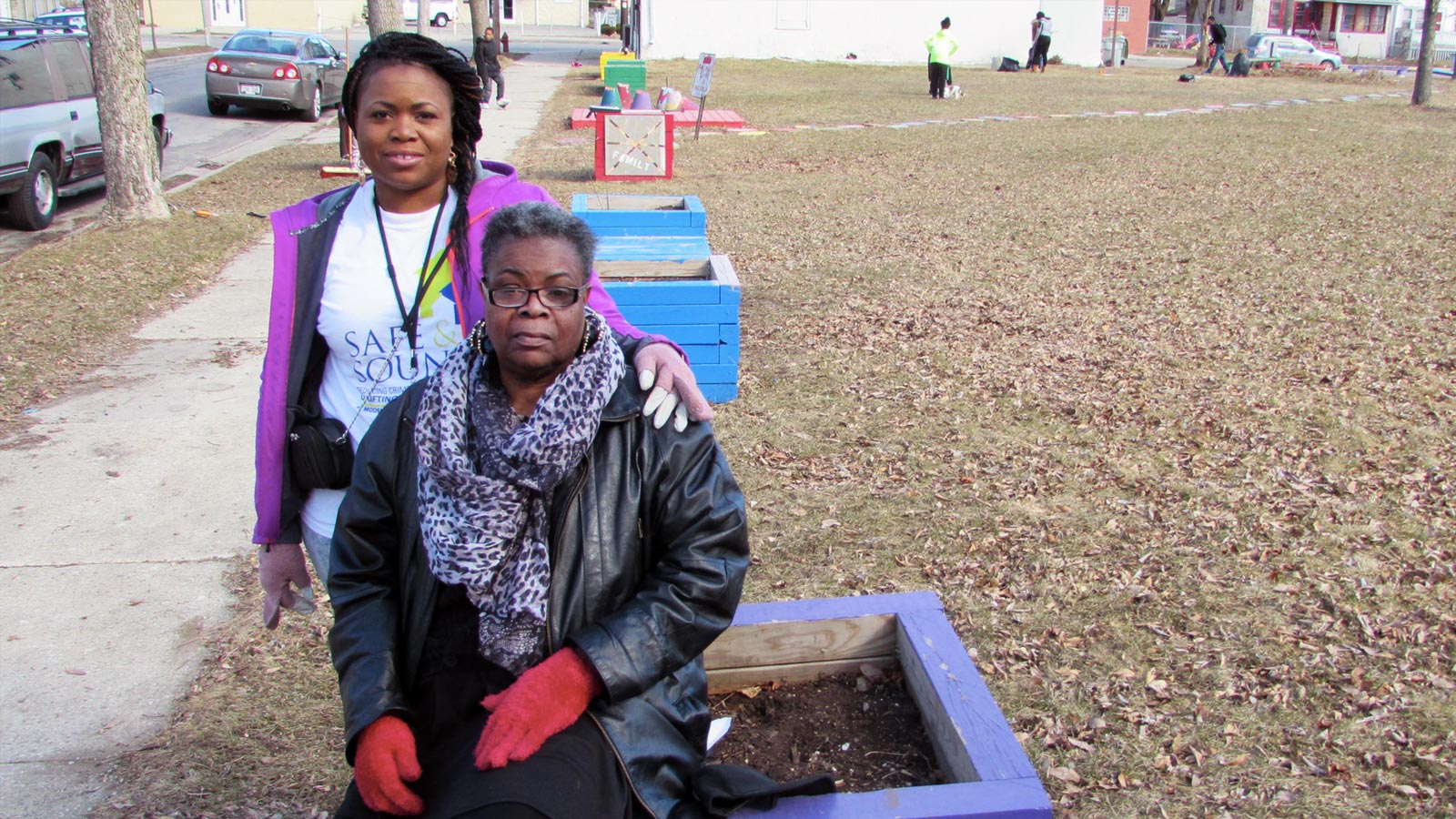

Adrian Spencer grew up in the Harambee neighborhood of Milwaukee and knows its troubles intimately: high rates of poverty, property vacancy, joblessness and crime. Especially crime. Spencer’s house, as well as her mother’s, sat across the street from a bar where nightly brawls spilled into the street, and gunshots rang through the air—sometimes hitting her building.
In 2008, a local group, Riverworks Development Corporation, launched an economic development initiative along the Keefe Avenue corridor, near Spencer’s home. They built a park along a former railway, converted an industrial facility into 36 apartments and razed 12 blighted buildings. Overall, LISC has invested $3 million in the greater Harambee neighborhood.
But crime, though abating, still tore at the fabric of the community.
In 2013, Spencer, who was committed to transforming her neighborhood, joined Riverworks as an AmeriCorps member and took part in a SafeGrowth anti-crime training, sponsored by LISC, that teamed law enforcement with residents. By sifting through police data, the team could see that crime in Harambee radiated from the bar across the street from Spencer’s home.
Residents took swift action. They hired a private investigator and collected video footage of the troubled club at night. When city authorities saw the footage and heard testimonials from impassioned neighbors, they closed the bar permanently. Spencer and her mother, along with many volunteers and partners, built a pocket park on the adjacent property.
Violent crime in Harambee has plummeted 57 percent over the last seven years and dropped 26 percent in 2014 alone. Before becoming a community activist, Spencer recalls, “I just kept my head down, went to work and took care of my kids.” Wanting a safer place to live “is really what prompted me to go into this line of work.” Today, all of Harambee is the better for it.


To hear the residents of Mount Eden tell it, their South Bronx neighborhood has risen, literally, from the ashes of burned out buildings and profound disinvestment. In recent years, as the health of the community has rebounded, so has its commitment to nurturing the physical health of the people who live there.
At the heart of this work is New Settlement Apartments, creator of more than 1,000 quality, affordable homes in Mount Eden. Among its many efforts, NSA and its parent company, Settlement Housing Fund, worked with the city to develop a massive education and community center that includes two new public schools, dance studios, gallery space, a roof garden, a health clinic and a 75-foot, five-lane swimming pool. The campus was made possible, in part, through an $8 million allocation of New Markets Tax Credits from LISC.
Like many low-income areas, the South Bronx battles the persistent problems of childhood obesity and lack of access to nutritious, affordable food. To help remedy these issues, LISC NYC has provided nearly $600,000 in grants to NSA since 2012 for health and wellness initiatives and organizational support. A quarter of that funding has been earmarked for nutrition and healthy eating efforts through our Communities for Healthy Food program.
“In the short time since its opening, the New Settlement Community Center has become a vibrant neighborhood hub that brings people together and significantly increases opportunities for children and adults to take part in activities that promote healthy living,” says Jack Doyle, executive director of NSA.
Mount Eden residents can take swimming classes in the new pool or dance, Zumba, yoga and cardio fitness in the light-drenched studios. Families now have access to local fruits and vegetables through a farm share program, and they can participate in nutrition classes, cooking demonstrations and rooftop gardening.
LISC NYC has also joined forces with 16 other funders through the Change Capital Fund to bolster NSA’s education, workforce and housing efforts to move the needle on poverty in Mount Eden. Says Doyle, these investments are all a critical part of reweaving the social fabric of a community, and they’re working.
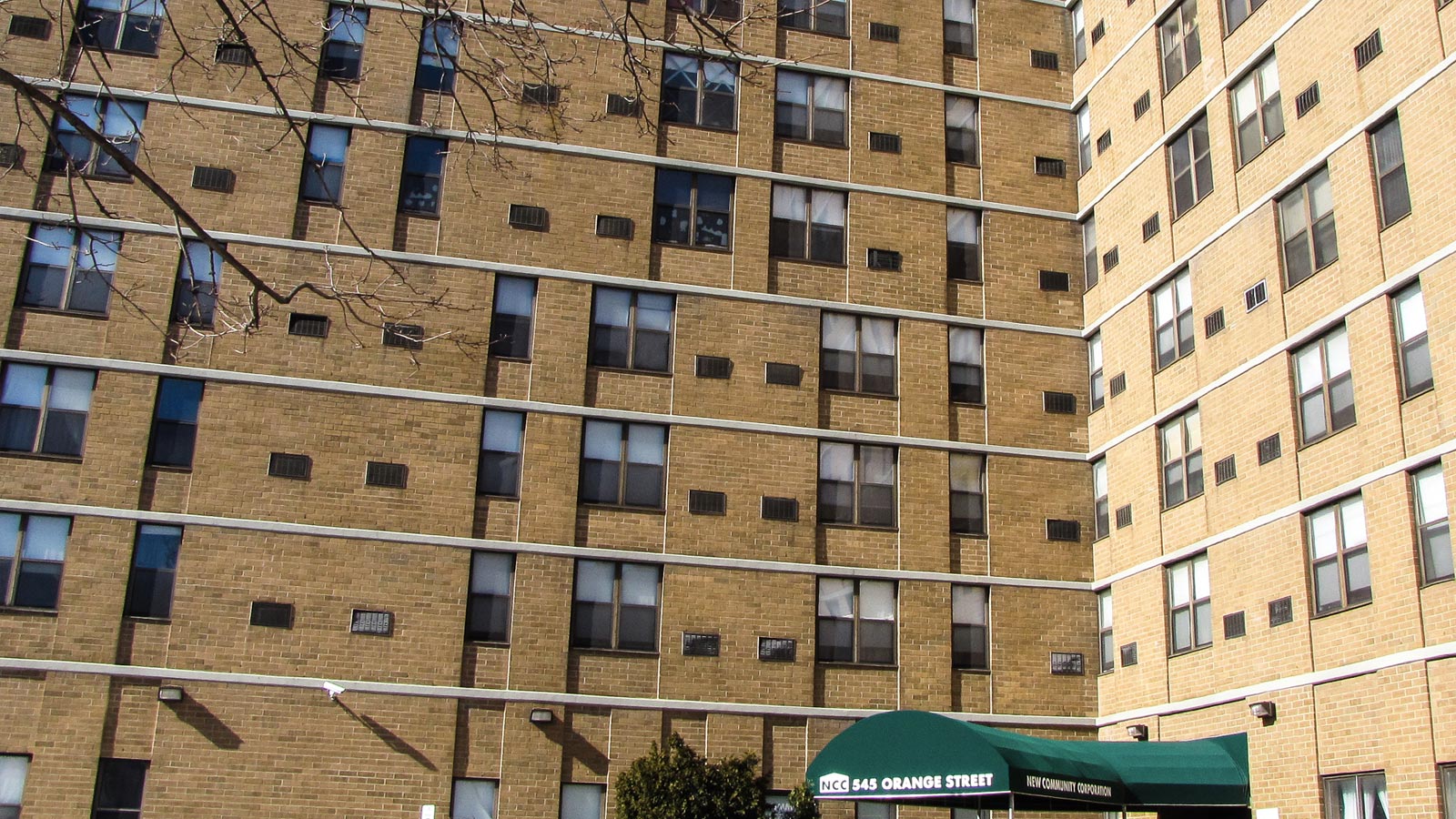

At a time when the demand for affordable housing in Newark is on the rise, maintaining the safe, quality units that already exist is more important than ever. As one of the largest community development organizations in Newark, New Community Corporation (NCC) is dedicated to stabilizing neighborhoods in the city’s Central Ward. NCC has created more than 2,000 affordable homes and is a key housing provider for Newark’s low- to moderate-income communities.
In 2014, NCC set out to renovate and preserve one of its most important properties: New Community Manor, a 327-apartment, eight-building housing development. To help move the project forward, Greater Newark LISC provided its long-time partner with a $2 million loan. The cash infusion helped stabilize the 45-year-old organization’s financial base and ensured NCC could clear some of the hurdles for the $15 million project.
The buildings that make up New Community Manor—which include a 154-unit high rise for seniors and disabled adults, two mid-rise buildings and a cluster of townhouses—will undergo a major facelift, including updated heating systems, renovated kitchens and bathrooms, new roofing, new windows and improved landscaping. Built in the early 1980s, the property is in desperate need of modernization.
NCC has helped improve the lives of nearly 50,000 Newark residents through myriad services including youth programs, healthcare and housing. Greater Newark LISC works with NCC and other partners to improve the outlook for people in disinvested neighborhoods. A stronger NCC means a stronger Newark. It also means thousands of affordable homes for families that need them.
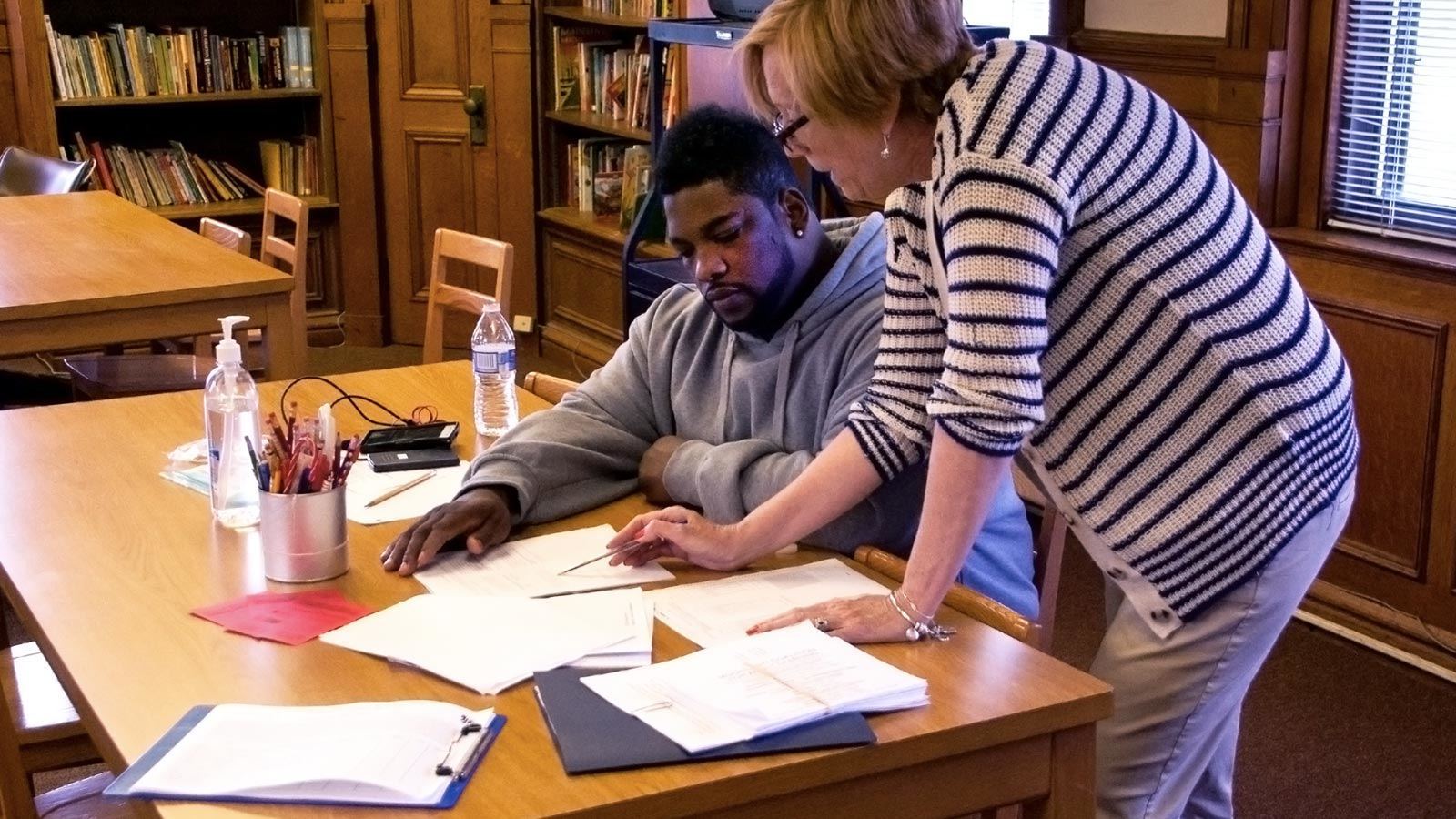

The people behind Moonlight Coalition for Adult Learning, a GED program for Peoria residents, know that life can get in the way of earning a high school diploma. But they also know that education is a key to climbing out of poverty and into the middle class.
That’s why Moonlight offers year-round enrollment, with classes at various times of day, so students can enroll and attend class when family and work schedules permit, and they can progress through the GED courses and practice tests at their own pace. Programs are also held at sites near bus routes or within an easy walk of the city’s low-income neighborhoods, so just getting to class isn’t another obstacle.
Moonlight also covers GED test fees for students (which can run $120 or more), removing the financial barrier that blocks many people from continuing their education. In Peoria, 24 percent of adults 25 and older do not have a high school diploma; the rate jumps to 40 percent among adults living in the low-income South Side neighborhood—one of the places where LISC is concentrating our local efforts.
Most funding organizations require GED programs to follow strict guidelines around such things as course location and scheduling, which limits how accessible a program may be to students most in need. So Moonlight’s director, Hedy Elliot, sought out help from LISC, because we understood that the program had to meet the needs of the community in order to be effective. Since 2013, LISC has provided $90,000 in funding, along with an AmeriCorps member who serves as a tutor and administrative assistant.
“The whole spirit of the program is in how we run it,” says Elliott. “Other organizations try to structure the program for you. LISC allows me to be the expert.”
The arrangement is clearly paying off. In 2014, 36 percent of Peoria’s GED graduates had taken part in the Moonlight program and some 90 students who enrolled last year will soon have a high school degree—taking a step toward a brighter future.
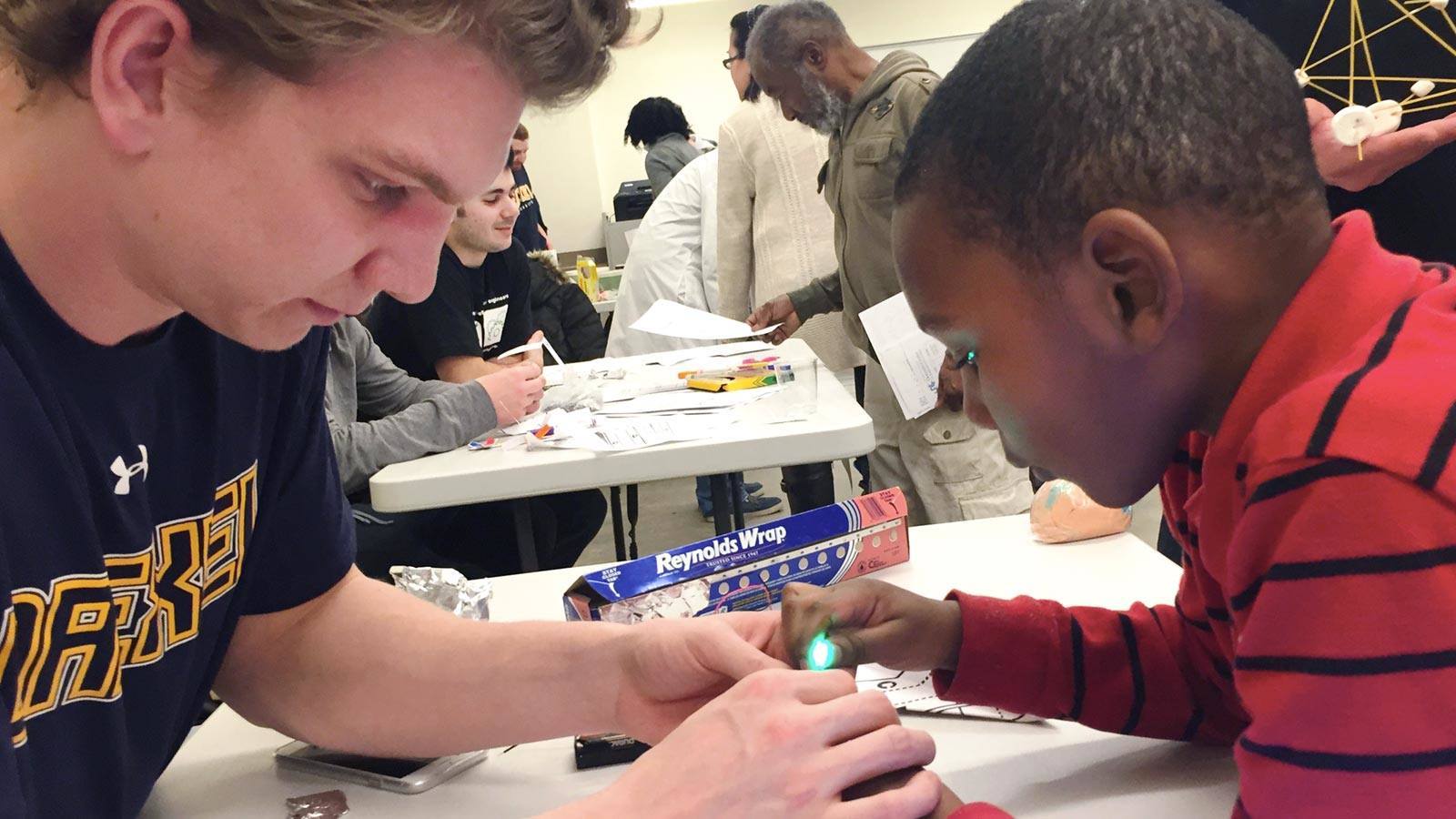

LISC has always understood that neighborhoods change from the ground up. Much the same can be said for people, which is why Philadelphia LISC, in partnership with Drexel University and People’s Emergency Center (PEC), is working to transform early childhood education in West Philadelphia. Fewer than 33 percent of third graders attending the neighborhood school are reading at grade level—and this is particularly distressing given that children who read well in third grade are twice as likely to graduate high school.
The groundbreaking West Philadelphia Early Childhood Education Initiative is aimed at getting young children ready for kindergarten and boosting the number of students entering fourth grade who read at grade level. Family engagement is a central part of the initiative’s success.
To that end, PEC hired neighbors and parents to engage families by sharing information about resources, opportunities and events—with remarkable success. During one of the snowiest Februarys on record, these Community Connectors interviewed more than 450 parents and caregivers, gathering invaluable data about their needs, obstacles and concerns around access to early education.
Local parents were also paid a stipend to serve as Family Ambassadors to strengthen social networks among neighboring families. Parent cafes, read-aloud events, book giveaways, celebrations, and workshops promoted the importance of quality early education among parent and pulled in an additional 400 families.
Since signing on as Family Ambassador, one parent, Wade Carter, has gained the confidence and knowledge to find the right school for his son and help build a soccer team there. “We are learning an enhanced set of skills and tools that benefit our children, our families and our community,” said Rachel Honore, a West Philadelphia mother. “If these positive seeds are planted early, there is promise of a great harvest.”
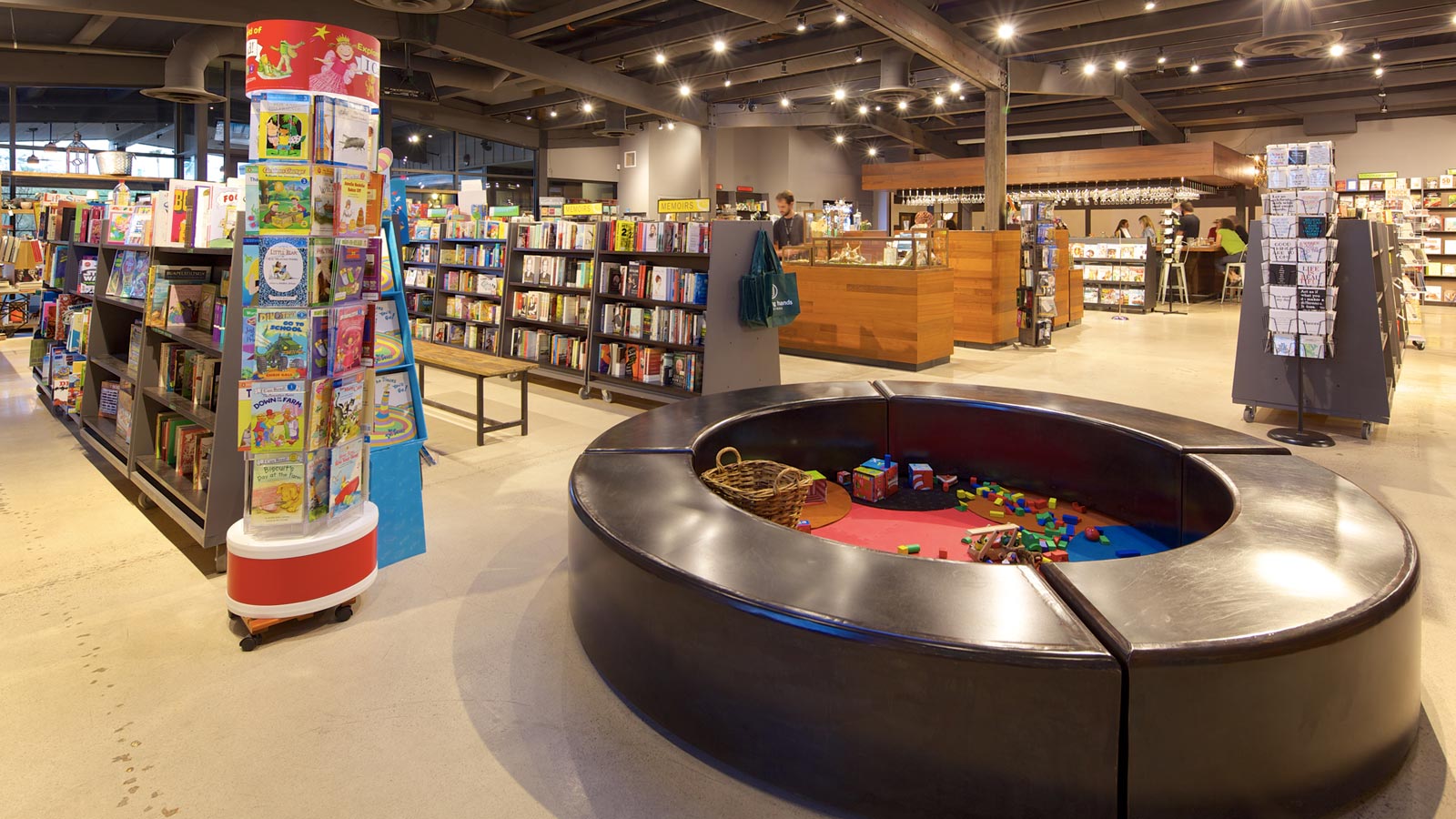

For more than half a century, Beef Eaters’ in Uptown Phoenix hosted scores of family celebrations and business deals and served countless king-sized T-bones to football stars, politicians and ordinary Joes. But in 2006, the faux-Tudor icon closed its doors and has been vacant and decaying ever since. Locals were sure the vitality the restaurant had lent the neighborhood, and its history, were lost forever.
Enter Venue Projects, a developer that specializes in revitalizing historic buildings and businesses in Phoenix. Venue had the vision to redevelop the mid-century restaurant as a commercial, mixed-use space, preserving a piece of the city’s heritage and creating jobs and commercial energy for the community at the same time.
With a loan of more than $1 million from LISC, in partnership with Alliance Bank, Venue Projects restored the building, renaming it The Newton in memory of Beef Eaters’ founder Jay Newton.
Adjacent to a Metro light rail station, it now boasts 17,000 square feet of commercial space and could generate more than 100 new jobs. It is anchored by co-owners Changing Hands Bookstore and Southern Rail Restaurant, among other businesses, and includes community meeting and cultural event facilities.
LISC Phoenix is committed to nurturing this kind of sustainable and equitable development along the region’s light rail corridor. By seeding commercial opportunities, transit-oriented initiatives help residents access goods and services in their own neighborhoods. And successful local businesses forestall blight and crime and complement investments in housing.


Fifty years’ worth of education research shows that schools—and students—perform best when parents are actively involved. But in local schools in the Lawrenceville neighborhood of Pittsburgh, that kind of involvement has been sorely lacking. Only about 40 percent of third graders scored “proficient” or “advanced” on state tests, and almost 75 percent of families were choosing schools outside the neighborhood.
To help turn the tide for the schools and for Lawrenceville residents, Neighborhood Allies, the local LISC affiliate in Pittsburgh, partnered with two nonprofits to create PEP Rally, a parent engagement initiative aimed at making Lawrenceville schools vibrant and welcoming places for all families.
The first step was to hire a parent organizer for three vulnerable schools. Through interviews, focus groups and newly formed parent groups, the organizer drew in more than 260 parents during the pilot year. PEP Rally created afterschool programs, organized regular Family Nights, and inspired parents to research teaching and curriculum at high performing schools that could be replicated in Lawrenceville.
“It's refreshing to be a member of a group that is focused on real, everyday concerns that we as parents face,” said Tina Russell, a parent at the Arsenal School. “PEP Rally has given me the confidence to try to change the culture of our school for the better.”
As parent involvement has grown, so has student achievement. Two of the schools were recognized for ranking in the top 25 percent statewide for academic growth. With renewed parent confidence in Lawrenceville’s schools, plummeting enrollment has done an about face, and all three neighborhood schools are flourishing.
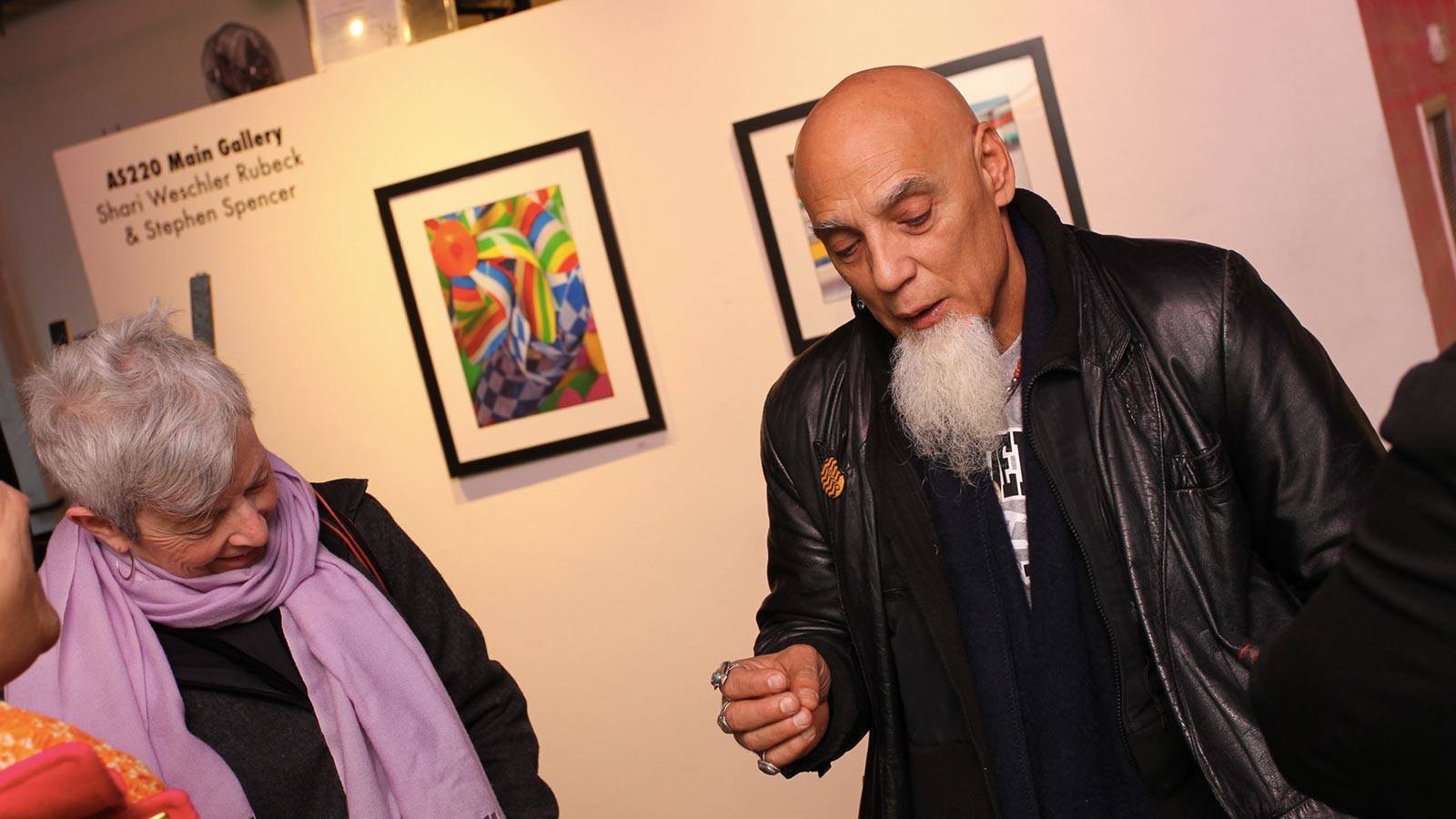

Artists can play a pivotal role in community development, enriching the cultural life of neighborhoods and beautifying the places where we live. The city of Providence, R.I., has benefited from that kind of dynamism with AS220—AS stands for “Artists’ Space.” With LISC’s support, AS220 was transformed from a complex of derelict buildings into a vibrant, mixed-use anchor for the city’s downtown, combining nearly 50 work/live units for artists with galleries, a theater, classrooms, bustling restaurants and other businesses on the ground floor.
Rhode Island LISC began working with AS220 in 2006 and has invested $275,000 in the intervening years. In 2014, we provided technical assistance and a capacity-building grant to support the organization’s ongoing commitment to intelligent design and keeping longtime downtown businesses intact alongside new enterprises. Dancers and musicians now work side by side with a decades-old locksmith.
Each year, AS220 serves more than 1,000 artists and is a destination for upwards of 93,000 people. “AS220 has been the driver of revitalization of downtown Providence,” says Rhode Island LISC’s Carrie Zaslow. “It’s what’s created a sense of place there, and it’s been done it in a way that has become a best practice for both nonprofit and for-profit developers.”
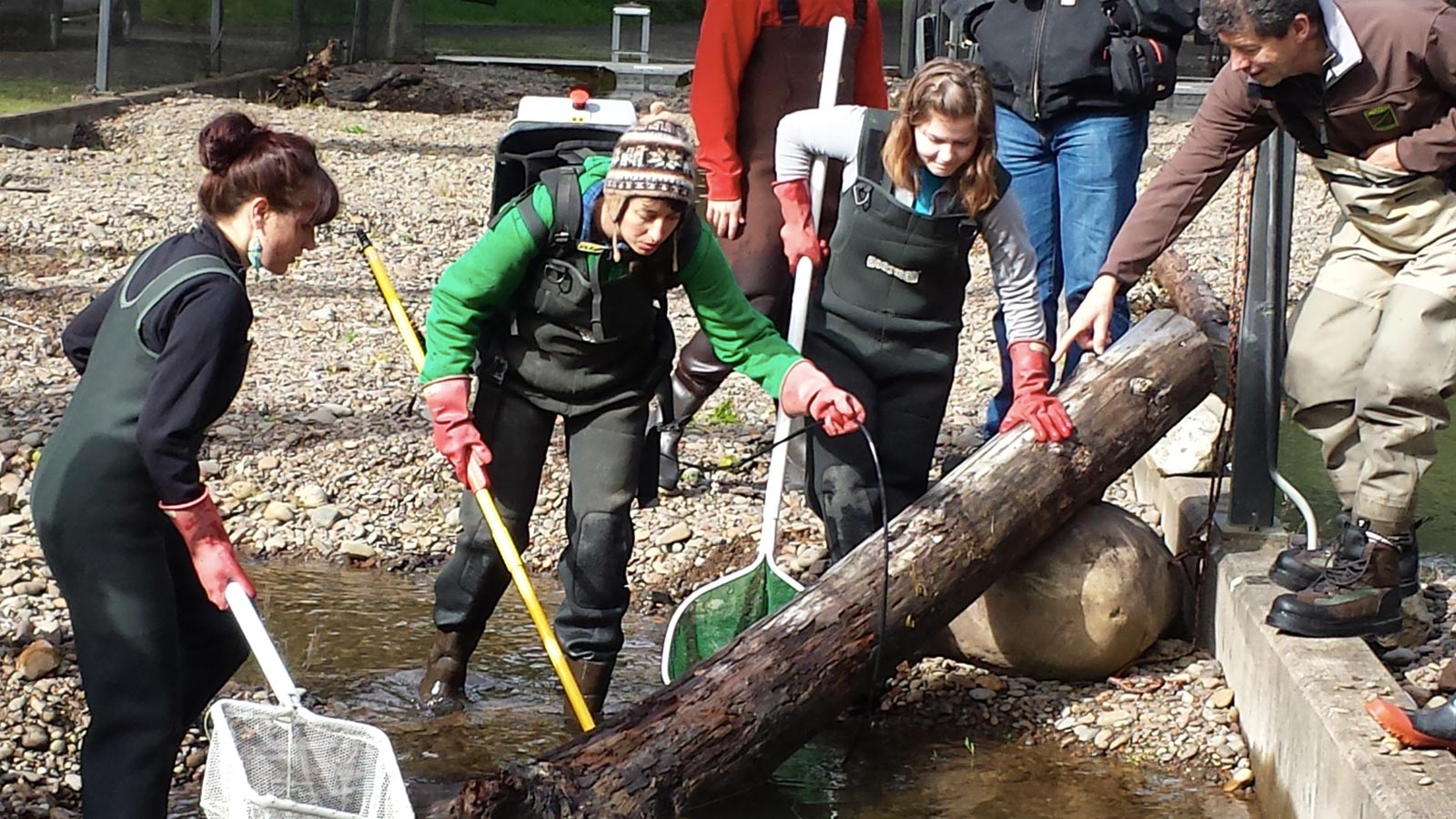
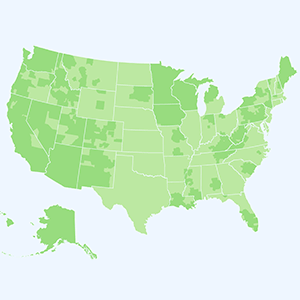
When 35-year-old Breeze Kelley heard about Dream$avers, a savings program that offers a three-to-one deposit match, she thought it sounded too good to be true. The program, run by NeighborWorks Umpqua and supported by LISC, targets rural southwestern Oregon residents who want to save for college, enroll in job training, start a business or buy a home. “I filled out the application and began saving,” says Kelley. “By the next year, I was able to move to Corvallis and start classes at Oregon State University, pursuing a Fisheries and Wildlife degree.”
Since it began 12 years ago, Dream$avers has helped more than 225 homeowners increase down payment amounts, 135 entrepreneurs have opened small businesses and 301 students have been able to pay for higher education. LISC has supported NeighborWorks Umpqua with $355,000 in capacity building grants over the life of the program, a portion of which has directly benefited Dream$avers.
These numbers add up to a lot of success. Since starting school, Kelley has worked for an environmental research organization, volunteered hundreds of hours at a wildlife rehabilitation center and became part of a mentorship program. She’s on the board of the Coastal Society and has been invited to join two research expeditions with the National Oceanic and Atmospheric Administration.
For Kelley, the NeighborWorks program has offered a hand up when she least expected to find one. “Dream$avers has given me the financial support to attend classes and be able to work only a few days a week,” she says. “That an organization would give me a second chance is still incredible to me.”
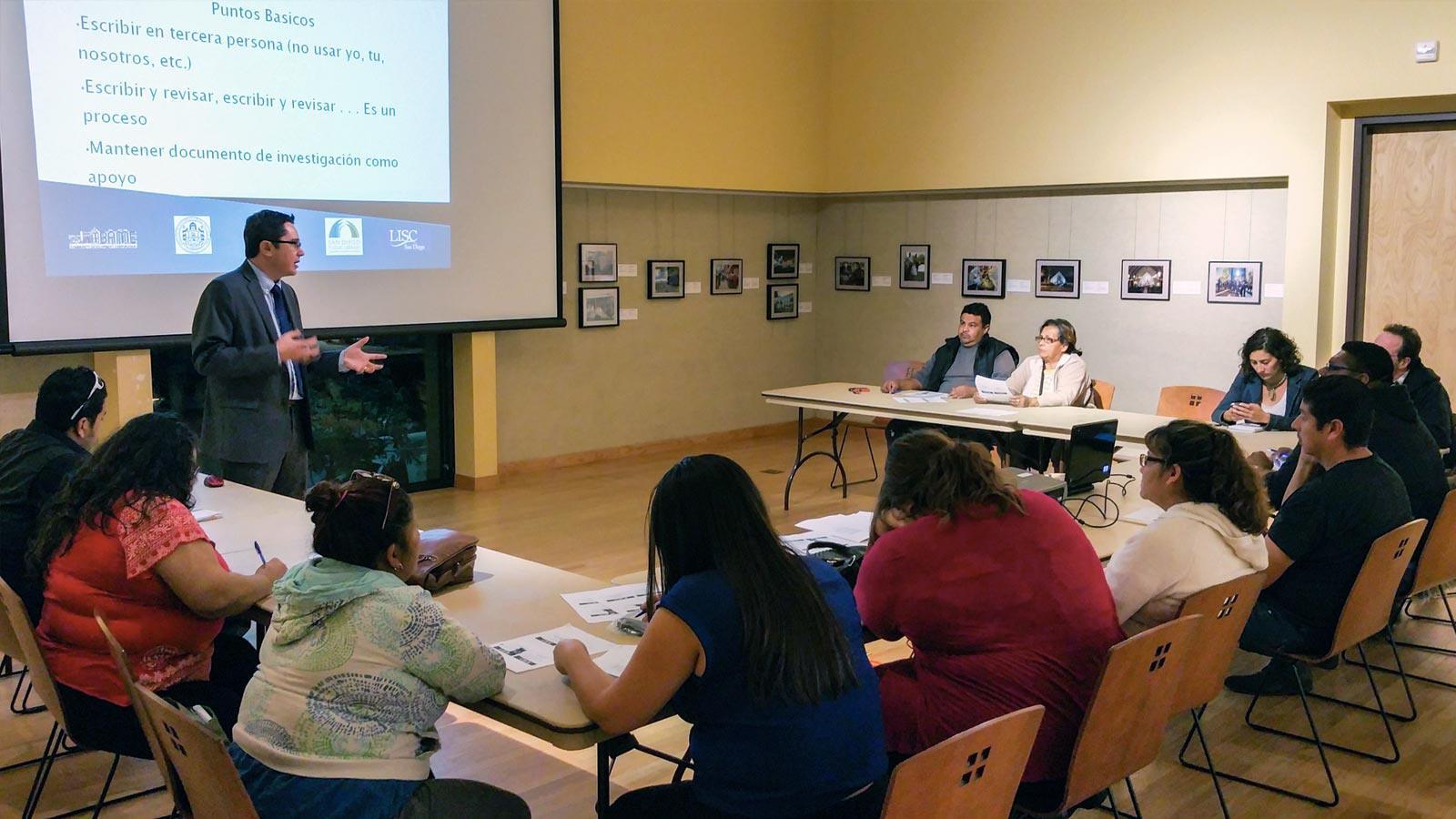

Trying to support a family on minimum wage spells poverty for nearly any American. At LISC San Diego, an innovative micro-enterprise program offers low- to moderate-income residents a means to supplement household income and take the reins of their financial lives, through small scale entrepreneurship.
Take Maria Guadalupe Cruz Valdez, a resident of Greater Logan Heights, one of San Diego’s lowest income areas and a LISC Building Sustaining Communities neighborhood. A single parent, she could barely make ends meet on the low wages from her service-sector job, and wanted to boost her income by opening a market stall selling toys, costume jewelry and household items.
Cruz Valdez learned about the micro-enterprise program through one of LISC’s partners in her neighborhood, an area composed mostly of first-generation immigrants from Latin America and elsewhere. The training, offered in Spanish, taught her how to design and run a micro-business and offered one-on-one coaching with a specialist who helped her map out her business plan and walk her through the licensing and permit process. Participants also get hands-on practice as vendors or stall operators showcasing their micro-enterprise at one of ten outdoor markets in the area that are connected to the program.
Since the program began two years ago, LISC has invested upwards of $270,000, principally through HUD Section 4 “matching” grants to bolster support from the city of San Diego, enhancing community development in Logan Heights and helping new entrepreneurs kick-start their businesses through established channels.
“I’ve learned what it takes to start a business, the financial knowledge I need to operate and the market opportunities I can pursue to be successful,” says Cruz Valdez, who, together with her daughter, is already selling goods at a neighborhood market. “With the training, I got what I need to be my own boss.”


When Bay Area LISC began working with Garfield Elementary School in 2010, it was one of the lowest performing schools in Oakland. There were a host of problems: unstable leadership (five principals cycled through the school in six years), low attendance rates, lackluster parent involvement. And fewer than 15 percent of 3rd graders were reading at grade level.
But, because Garfield serves 710 students in one of Bay Area LISC’s “sustainable communities,” we partnered with East Bay Asian Youth Center (EBAYC), the convening agency for our initiative there, and connected the school to resources aimed at raising academic achievement and reducing absenteeism. New partners, including AmeriCorps, were part of the comprehensive plan to turn Garfield around.
The first step was to develop quality pre-K programs, proven predictors of future academic achievement. In three years, Garfield went from no pre-K to having six award-winning, well-run classrooms serving 110 two to five year olds. And the strategy has paid off: children entering kindergarten are now prepared for the work ahead, and Garfield has been recognized by the Oakland Unified School District for its outstanding early childhood program.
Teachers also received intensive professional development to support literacy. They revised the curriculum and aligned it with an after-school enrichment program. By 2014, those efforts contributed to an 80 percent growth in 3rd grade literacy levels.
To help nurture high expectations and inclusion, EBAYC offered workshops and other supports to help parents understand how family participation is the key to their children’s success. “I didn’t know how to be involved in school,” said Judith Hernandez, a Garfield Elementary School parent. “But I learned how I can support my children’s education by asking questions, participating in parent-teacher conferences and joining the Academic Parent Teacher Team.”
Today, the energy at Garfield is palpable, and hope flies as high as the college banners lining the school’s hallways.
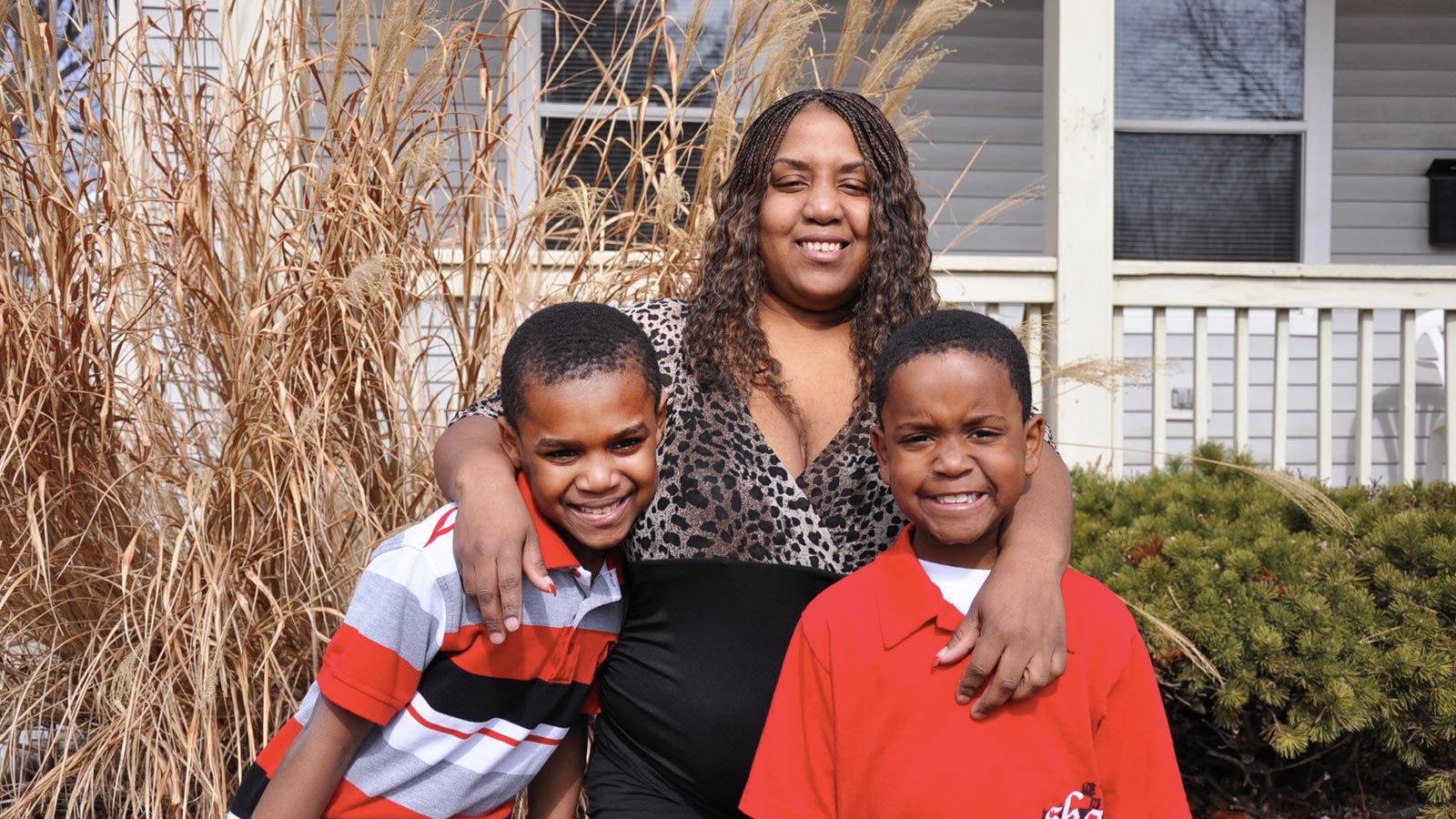

For years, Amanda Boone, a single, working mother of two young boys, has dreamed of buying a home. Last fall, with the holidays approaching, that dream couldn’t have seemed more remote. Boone was inundated with bills and debt, including a payday loan and a tax refund anticipation loan, and wage garnishments were sapping her paycheck.
But in September, Boone learned about LISC’s ONE Village Financial Opportunity Center (FOC) and began to get a handle on her stressful financial situation. For starters, financial coach Shalounda Jones pointed out that by paying off the refund loan early, Boone could use the FOC’s free tax preparation services. She did, and ended up saving over $300 in fees. Next, she used the refund to pay off a $2,000 wage garnishment, reduce a $4,000 payday loan by 25 percent and settle two more collection accounts, thereby avoiding more garnishments.
In just six months of financial coaching, Boone has learned how to stick to a household budget and repair her credit. Soon, she’ll open a Twin Accounts™ credit-building savings account to help boost her credit score.
The key to her success? “Budgeting!” Boone says. “My coach helped me understand budgeting and fixing my credit.” And perhaps most exciting of all, she adds, is the savings account she opened to put away money for a down payment on a house. Now, she has a sound strategy for making that dream a reality.
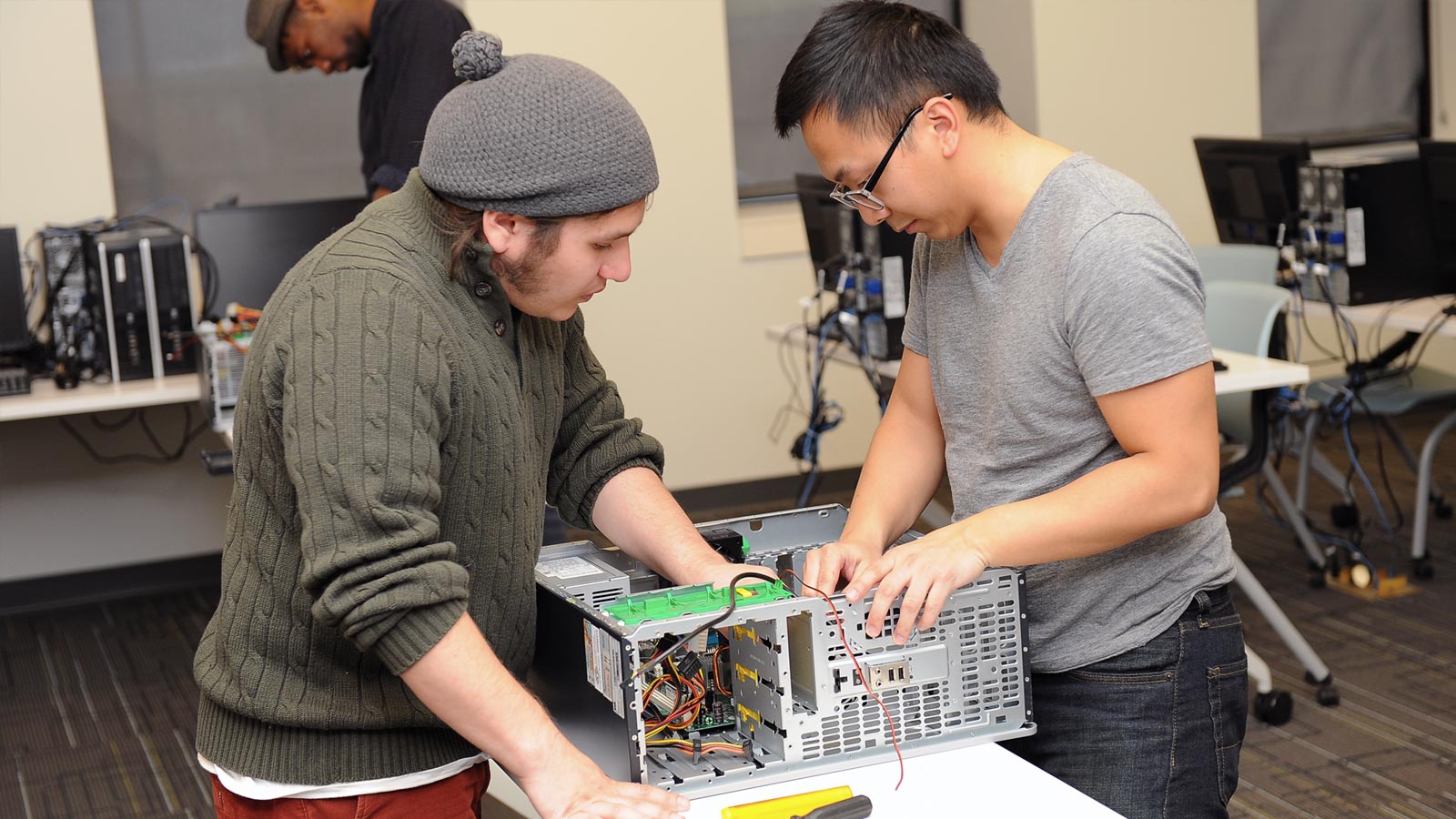

The North Branch Library, the country’s first lending library, served its public in North Minneapolis for nearly a century before it was closed in the late-1970s. Last year, the elegant brick building, which is on the National Register of Historic Places, was transformed into an equally community-minded institution: the EMERGE Career and Technology Center. The facility now offers an open access computer lab, career coaching and industry-specific skills training. There are also workshops in computing, job readiness, resume writing and financial literacy—and they’re all free. In its first year of operation, the center’s programming is expected to help more than 3,000 Northside adults and adolescents find jobs and launch careers.
EMERGE Community Development, which runs the center, is committed to closing the digital divide between those who have computer access and literacy and those who don’t. It pays particular attention to how low computer literacy affects a person's employment opportunities. According to Mike Wynne, EMERGE president and CEO, “the center will help people maximize their potential and start careers. As a result, we expect to see a stronger, more resilient workforce in North Minneapolis.”
Twin Cities LISC provided $1.3 million in financing to support the development of the new EMERGE facility, including predevelopment, acquisition and bridge financing. In addition to supporting the physical redevelopment, Twin Cities LISC has provided another $1.1 million in grant funding to EMERGE for its Financial Opportunity Center and ongoing work to reinvigorate the Northside economy.
The EMERGE career center “is a great step towards reducing employment disparities,” says Minneapolis Mayor Betsy Hodges. “Improving the employment outlook for North Minneapolis by providing new opportunities for young people and adults is key for the collective growth of the entire city.”


Anyone who knows communities knows that public libraries do much more than lend books—they are vital municipal service agencies. In Petersburg, Virginia, patrons rely on their library not only for literature, but for computer and internet access, and adolescent and adult programming. But the town’s existing library did not have the space or resources to keep pace with a community in need.
The new 45,000-square-foot Petersburg Library, which opened this spring, has room for more printed books and computers but also features classrooms for business and adult literacy training, and a room that serves as a healthy habits resource center for information on how to live a healthy lifestyle. There’s WIFI and a café, too.
In the wake of a decade of persistent disinvestment, the new library is positioned to play a critical role in helping revive this southern Virginia community. The building itself replaces the old central library which was housed in a 19th century house a third the size of the new facility. “The new Petersburg Library is cutting-edge in every aspect, and it raises the bar for libraries regionally,” said Candice Street, executive director of Virginia LISC, which gave an early $2-million bridge loan to the Petersburg Library Foundation to help launch the project.
LISC stepped in when the library project was at a standstill due to lack of funding. In addition to the bridge loan, LISC provided an allocation of $9.05 million in federal New Markets Tax Credits. These credits are designed to get private sector investment capital to flow into communities and projects that are too often left behind. Thanks to this boost, Petersburg has a new civic institution that will serve its citizens, and enrich their quality of life, for decades to come.
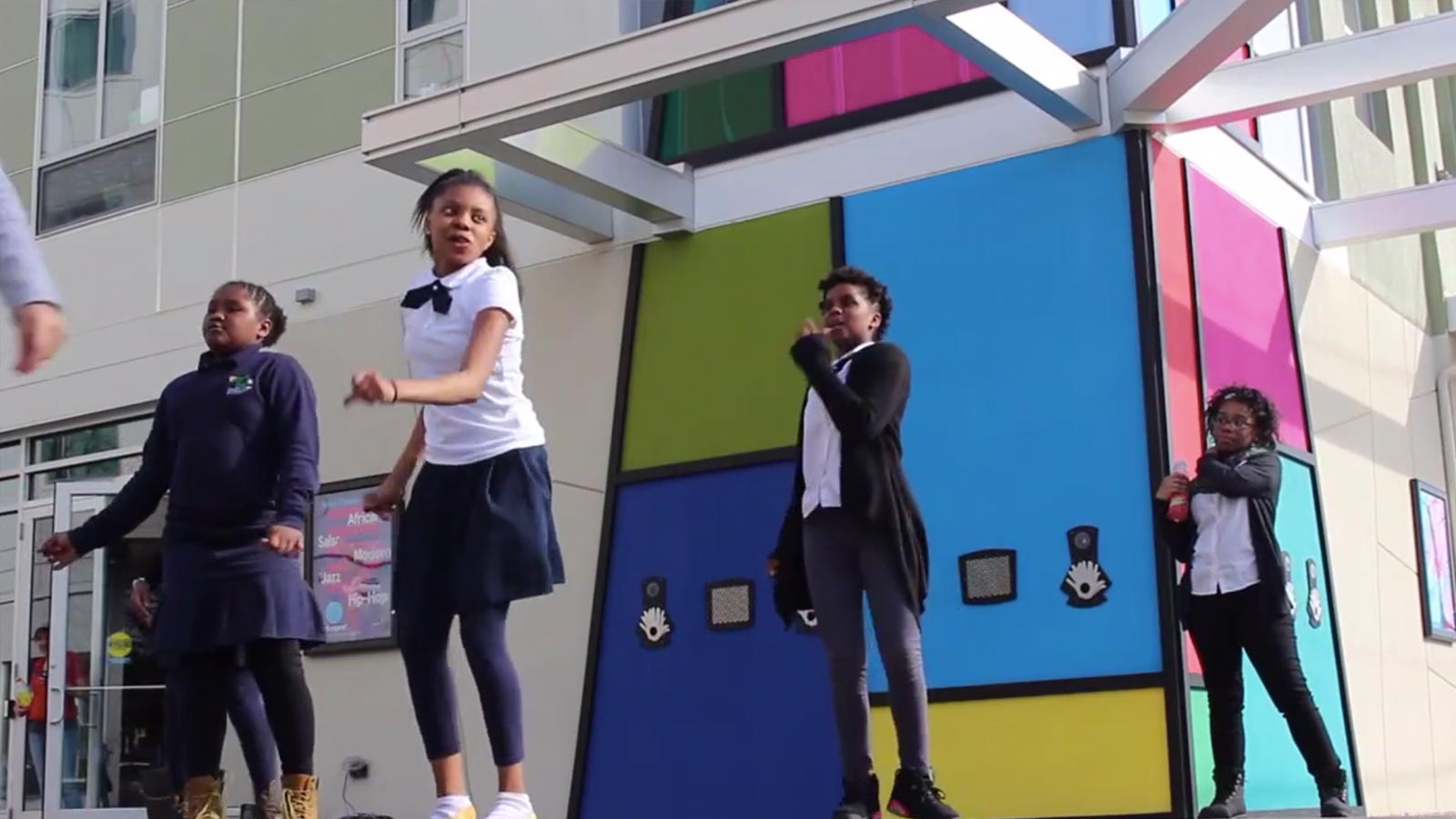

It takes insight and experience to guide young people on the path to personal and academic success. And that’s exactly what the staff of Dance Place, one of DC LISC’s partners, brings to youth programs that range from dance and cooking to visual arts and gardening to academic enrichment for local kids. “When you put that all together, it’s really the best way for children to find out who they are and get through the very complex experience of childhood into adolescence,” says Carla Perlo, executive director of Dance Place.
Dance Place serves local students, ages five to 13, through its “Energizers” after-school and summer programs, which receive targeted support from LISC. Participants can choose from classes that include African dance and drumming, chorus, swimming and journal writing—all during critical out-of-school hours. Reams of research show that after-school and summer breaks are when children are most vulnerable to getting caught up in drug use and gang activity, and to losing academic ground. Energizers provides a safe space where children are allowed to be children.
Performances and educational programming take place 10 hours a day, seven days a week, and attract more than 40,000 visitors and participants each year to Dance Place’s vibrant campus. The newly renovated facility, with a state-of-the-art-security system and plenty of room for classes, now anchors one end of the Monroe Street ArtsWalk, a dynamic stretch of artist lofts, restaurants and shops. Since 2010, LISC has invested more than $7 million in this thriving neighborhood, $46,000 of which was for Dance Place.
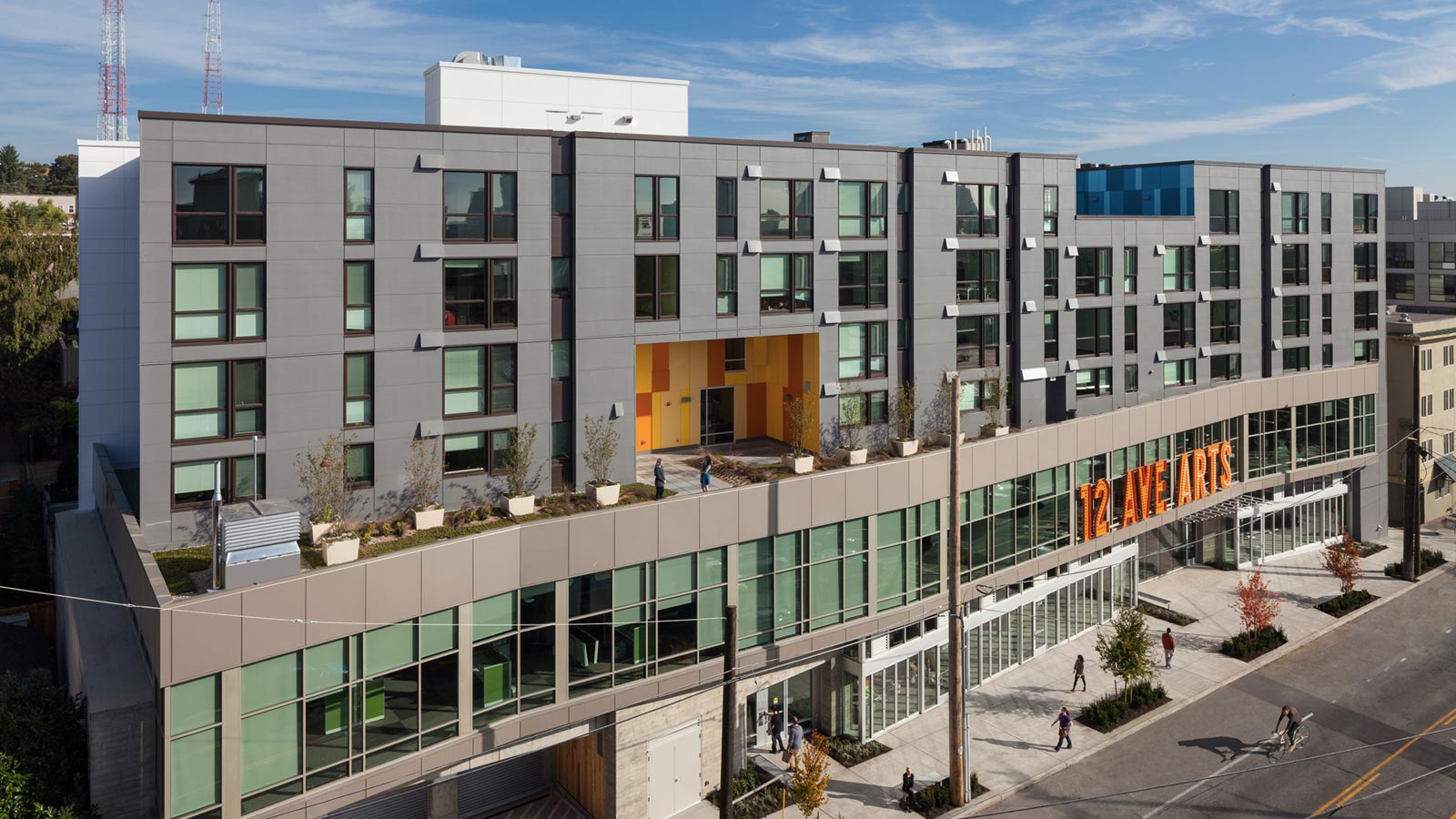

Seattle is booming. Cranes pierce the skyline and construction fences wrap city blocks as developers struggle to keep pace with the city’s population growth and economic expansion. But with boom come skyrocketing rents and home prices, leaving most housing out of reach for Seattle’s low-wage workers.
That’s where Capitol Hill Housing (CHH) comes in. Their mission is to provide safe and affordable housing for more than 1,800 low- and moderate-income individuals and families in Seattle. Impact Capital, in partnership with LISC, helped CHH transform a surface parking lot owned by the Seattle Police Department into a vibrant, mixed-use building known as the 12th Avenue Arts Project. The development features apartments for families and individuals who otherwise could not afford to live in this centrally located neighborhood. There’s also office space for nonprofits, community meeting rooms, two theaters, restaurants and the police department still has space to park their cars in an underground parking garage.
April Kim, a resident of 12th Avenue Arts since 2014, previously lived in a distant suburb and commuted to her job in central Seattle. “Some days I could spend three or four hours on the bus,” Kim recalls. “When I finally got home there was nowhere to walk to, so if I wanted to do anything after work it meant spending more time in the car or on the bus. My first day on Capitol Hill, it took me only 10 minutes to get to work, and even less time to get home.”
The 12th Avenue Arts Project is one of many efforts supported by Impact Capital to create lively, mixed-income neighborhoods with opportunities for neighborhood businesses and artists. Since 2007, Impact Capital provided CHH with $2.4 million in loans to build 188 affordable homes, as well as partnering with LISC to provide $215,000 in grants for outreach to businesses, transit and pedestrian improvements, and collaboration with local nonprofits.
Cover Video
LISC Archives
Welcome
Photograph: LISC Archives
Local Stories
All photographs/videos from LISC archives, except for the following:
Boston: Sheridan Works Company
Chicago: Gordon Walek
Detroit: Jim West Photography
Duluth: Chanti Calabria
Houston: Carlos Gonzalez
Michigan: Lundskow Designs
Newark: Eunice Lee
Phoenix: Andrew Pielage Photography
Rural: Al Weems
San Diego: BAME
San Francisco Bay Area: H. Nhi Chau & Lily Chuong
Twin Cities: Kage imagery
Virginia: Stephen Longstaff
Donors
All photographs/videos from LISC archives except for the following:
9, 12, 14: Gordon Walek
Team
All photographs from LISC archives except for the following:
8: Brian Peterson
Design and Development
Landesberg Design
Matthew Lee
All writing by LISC